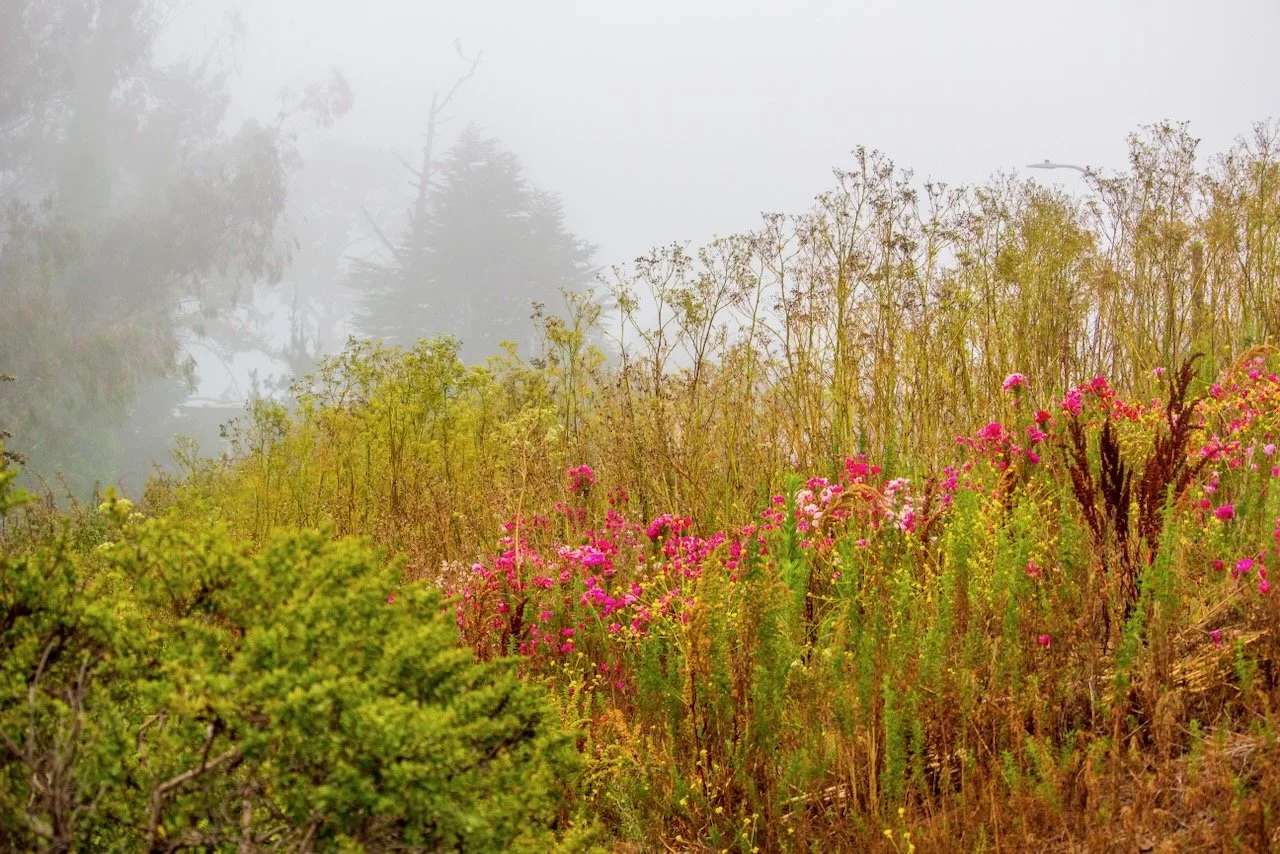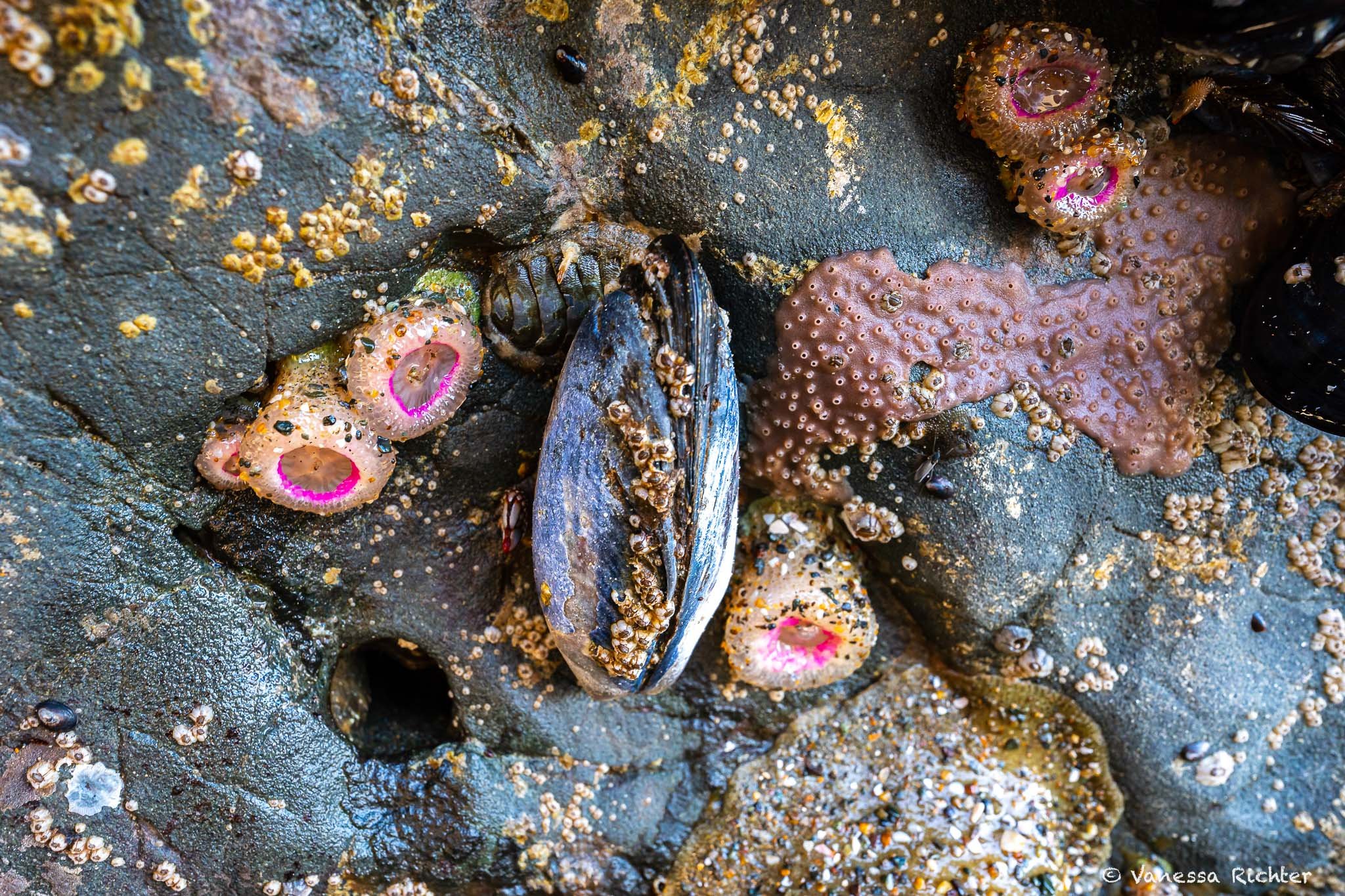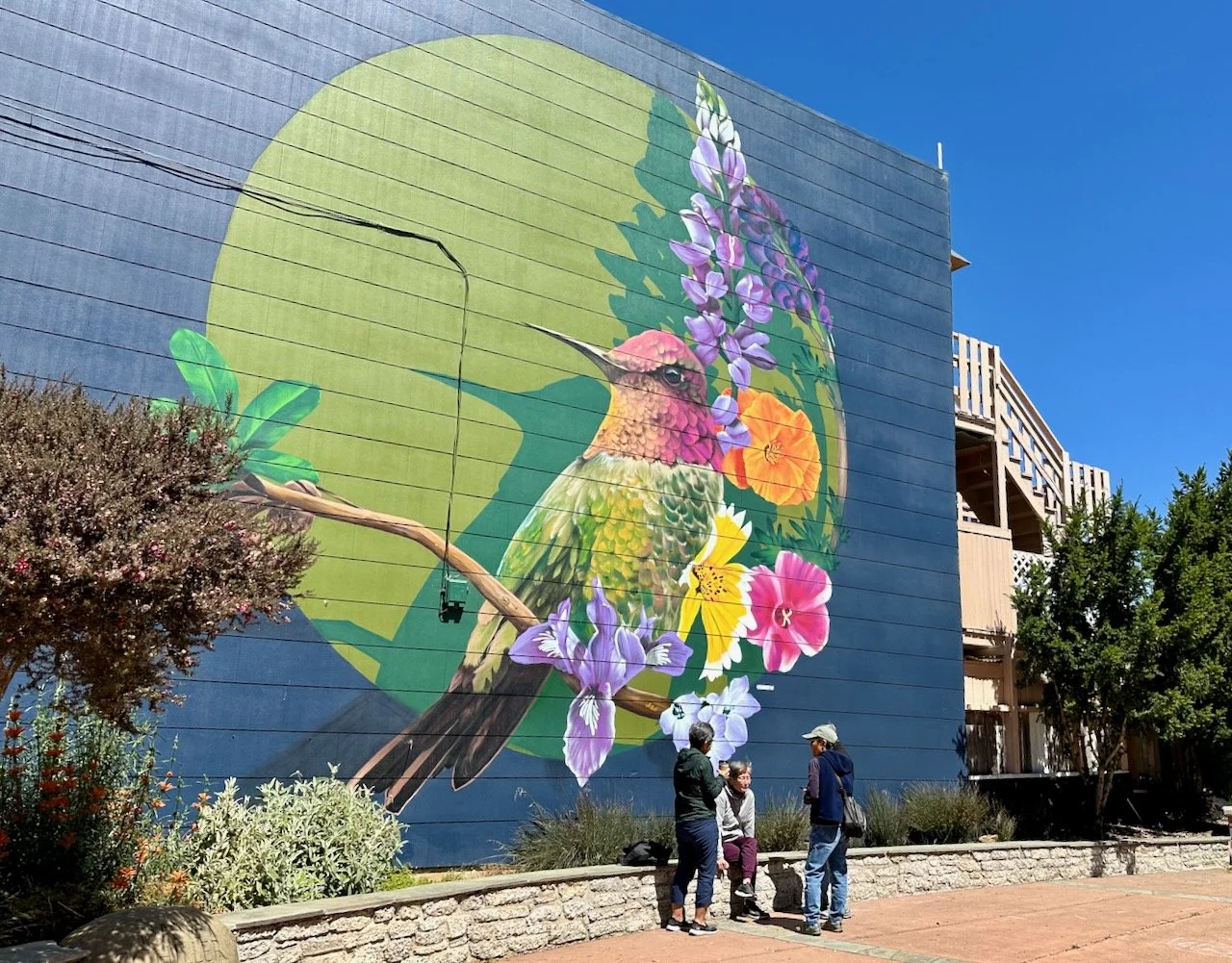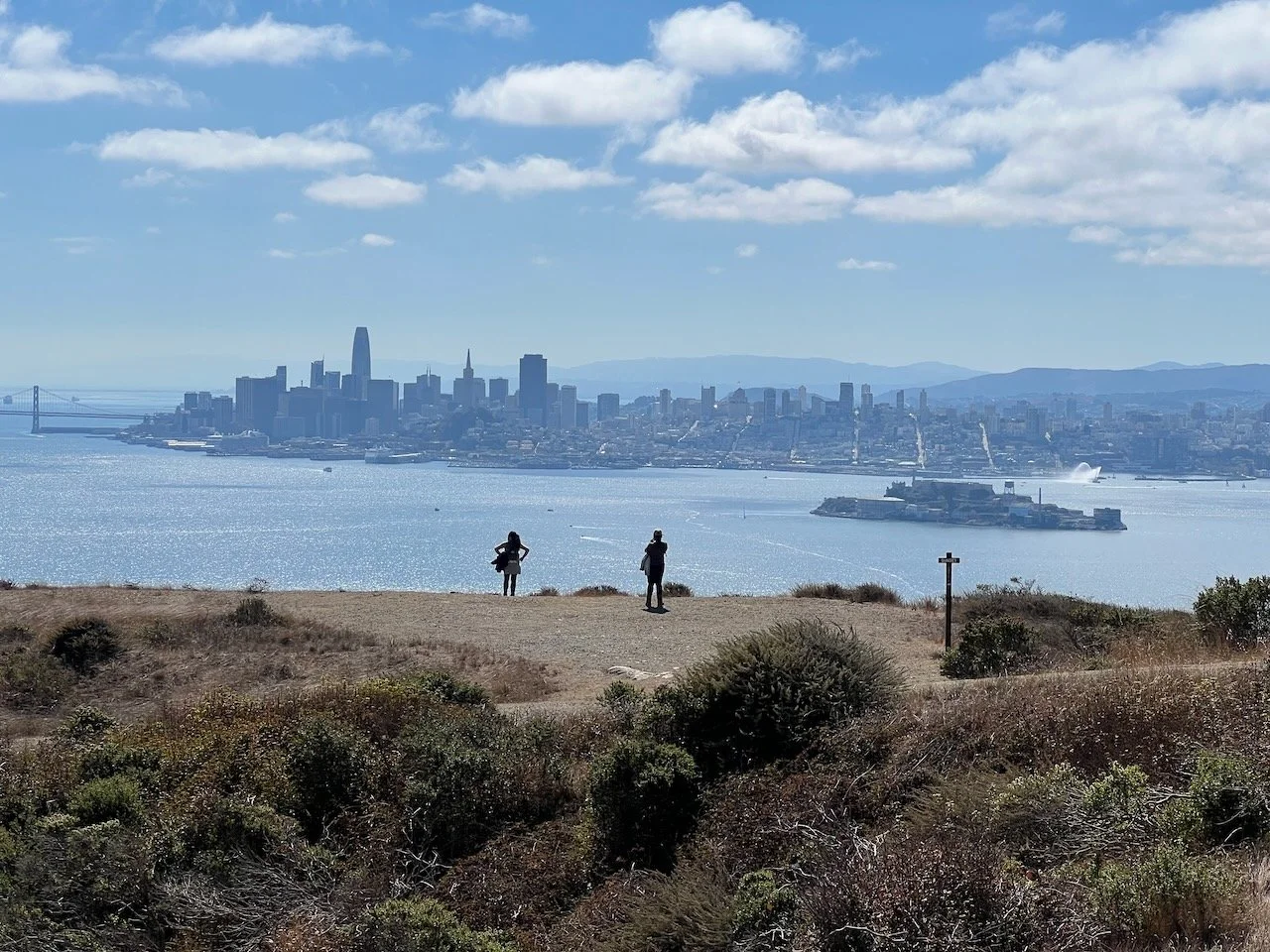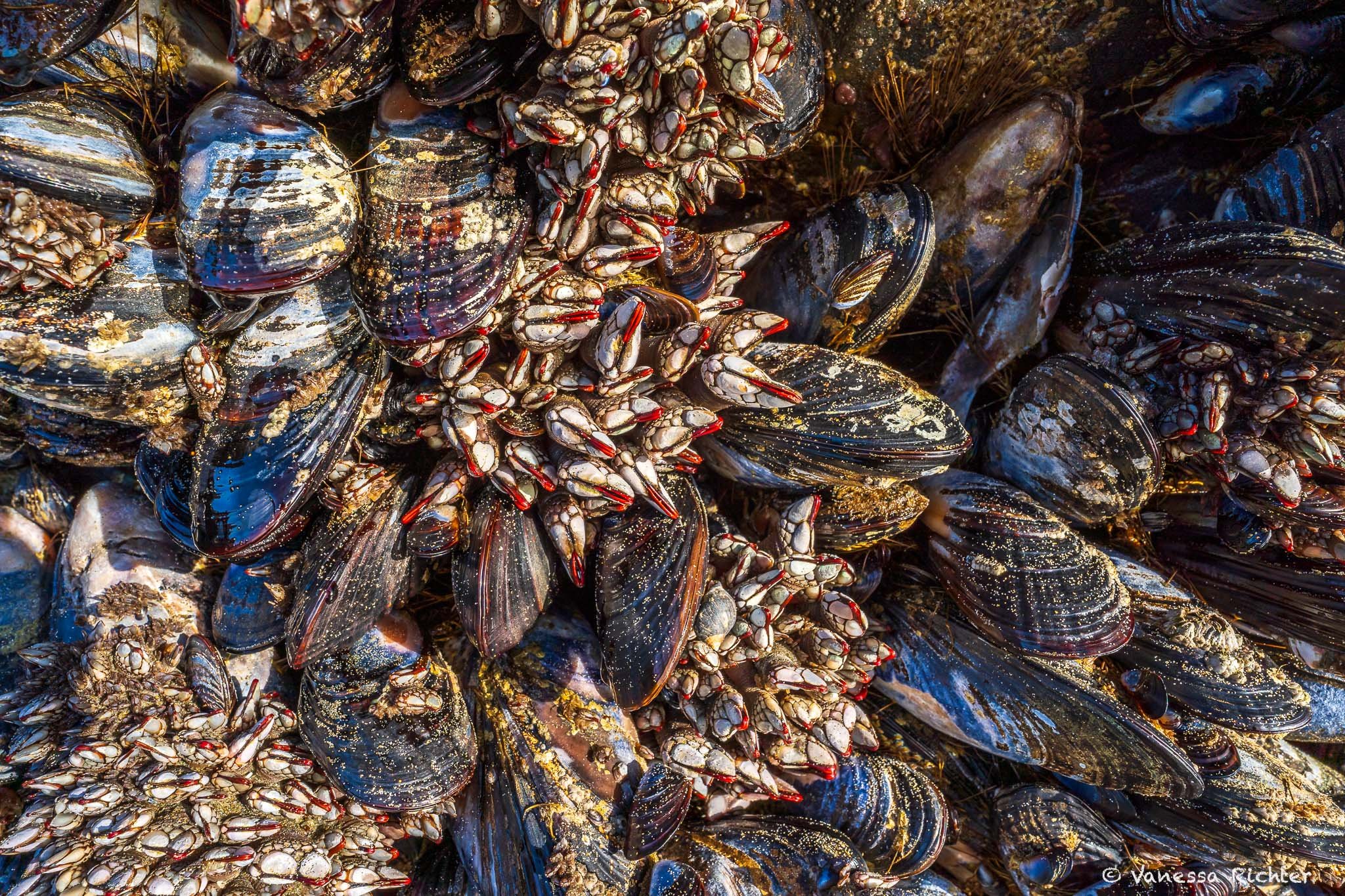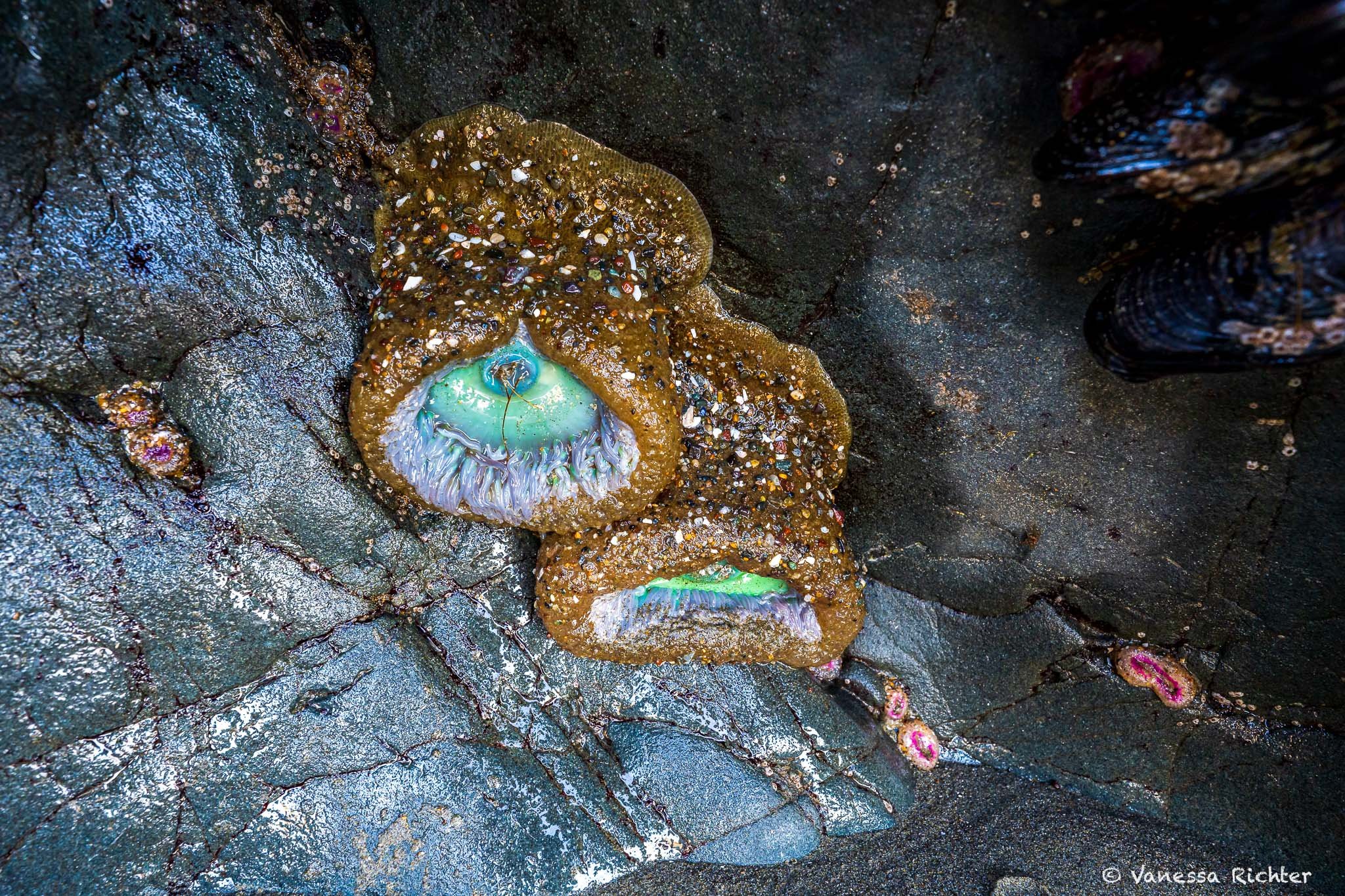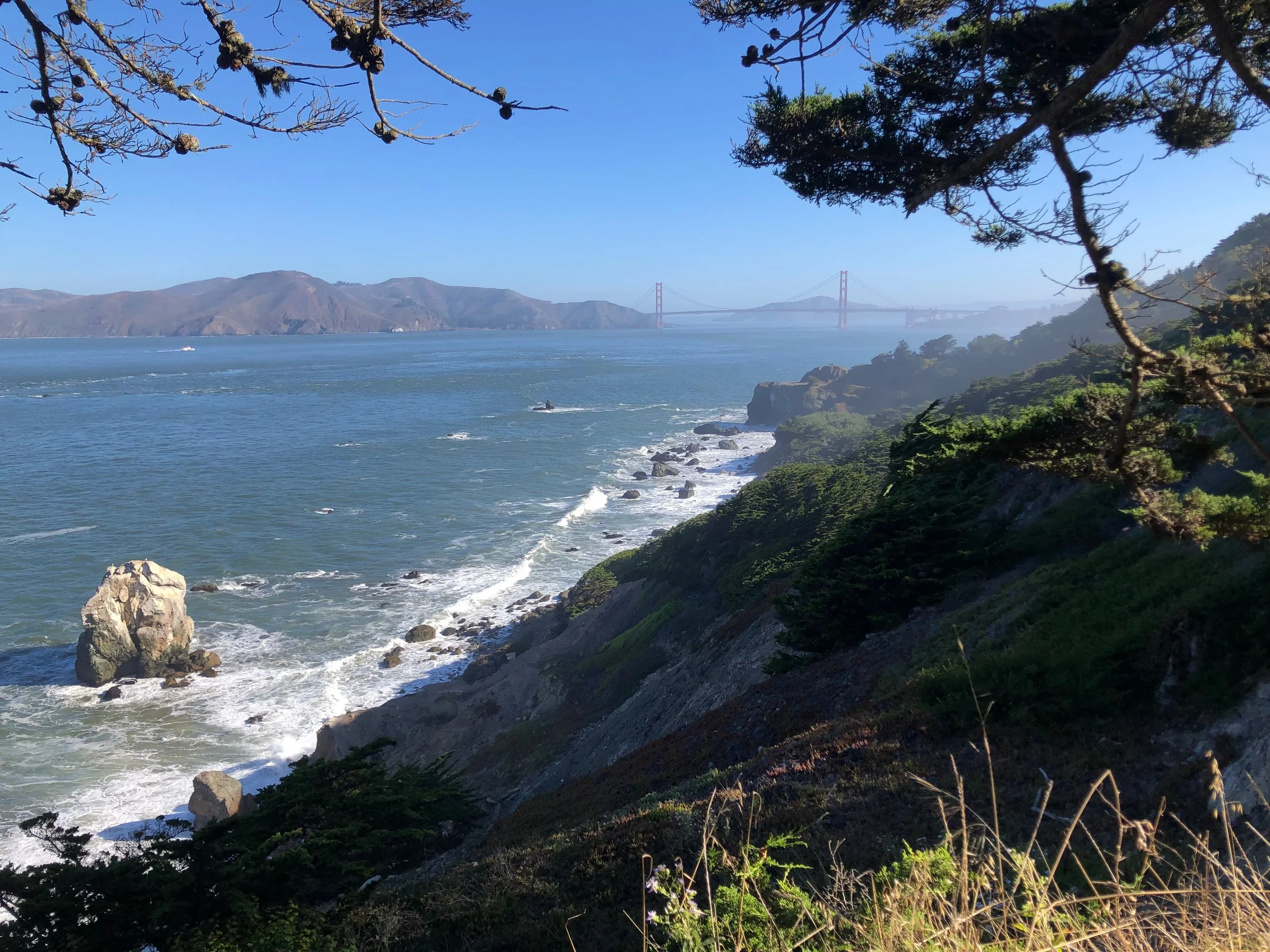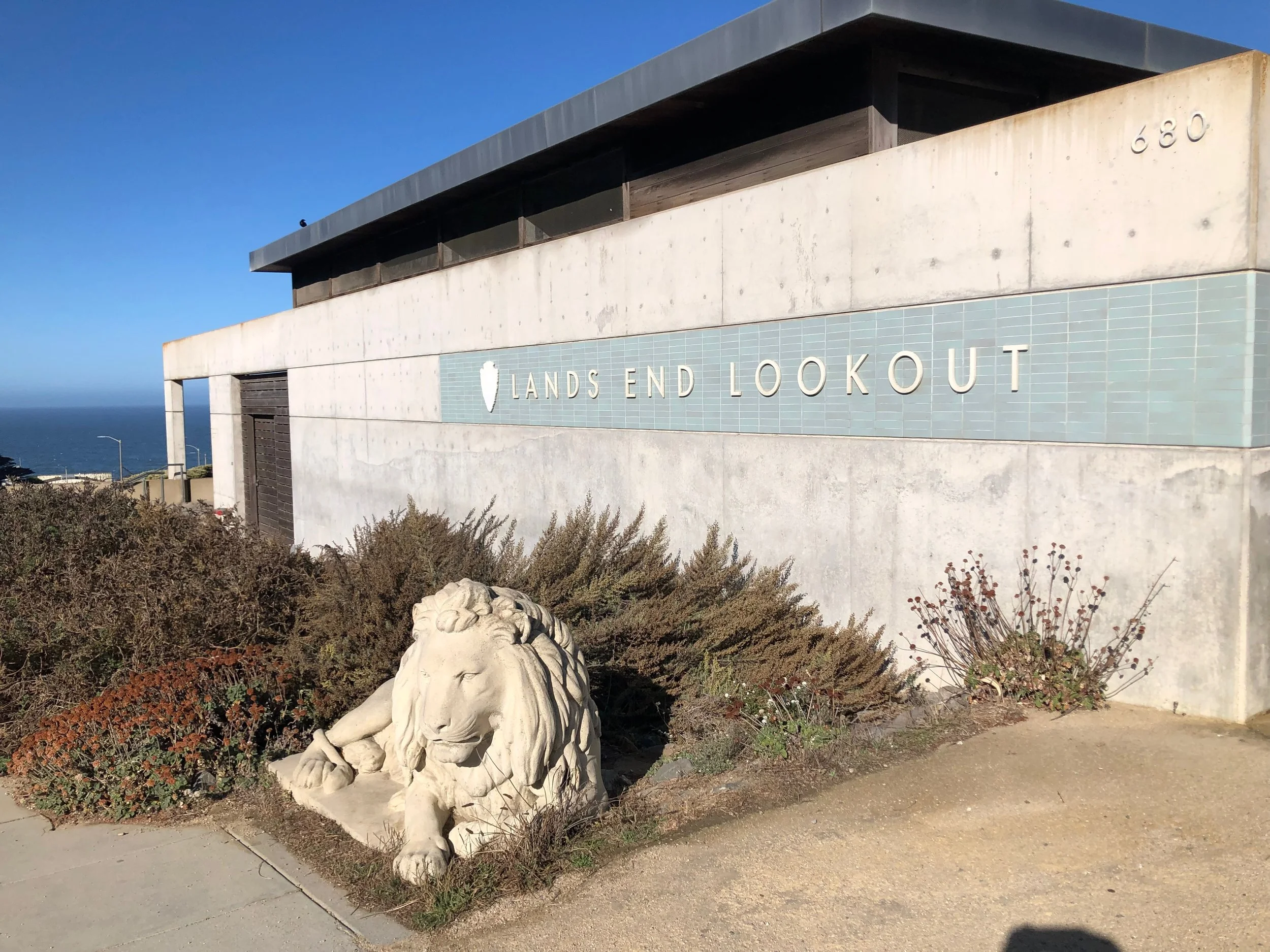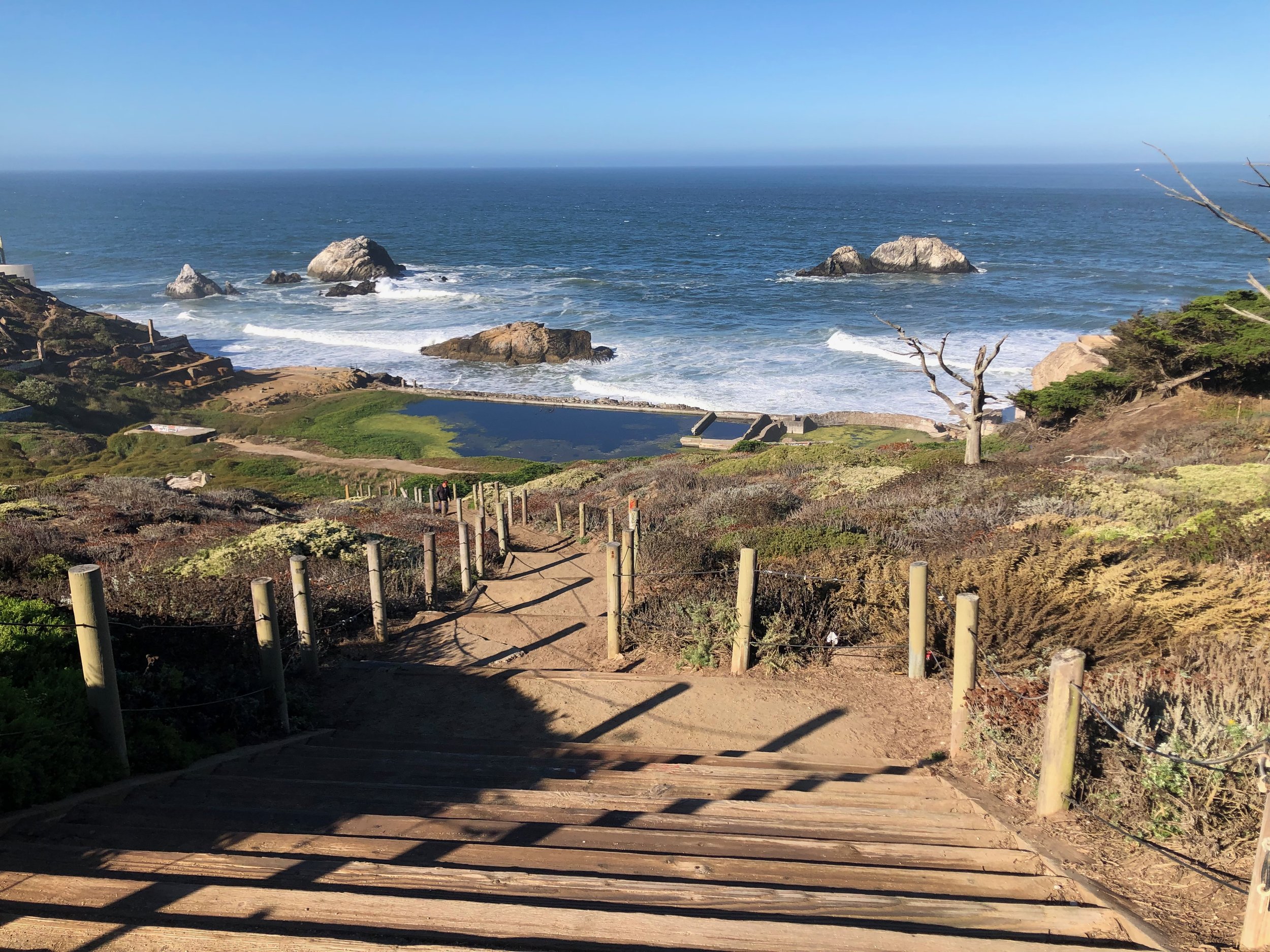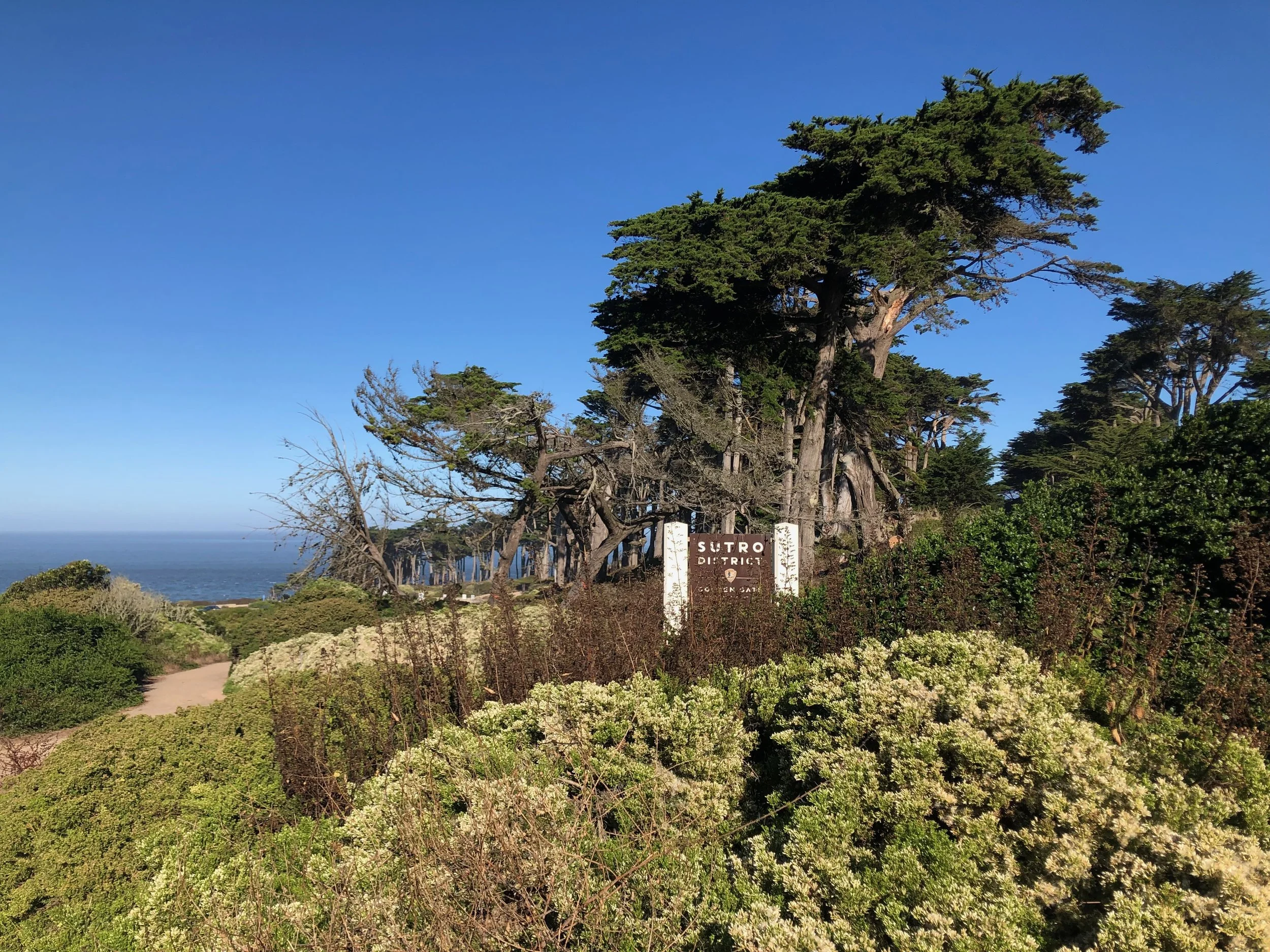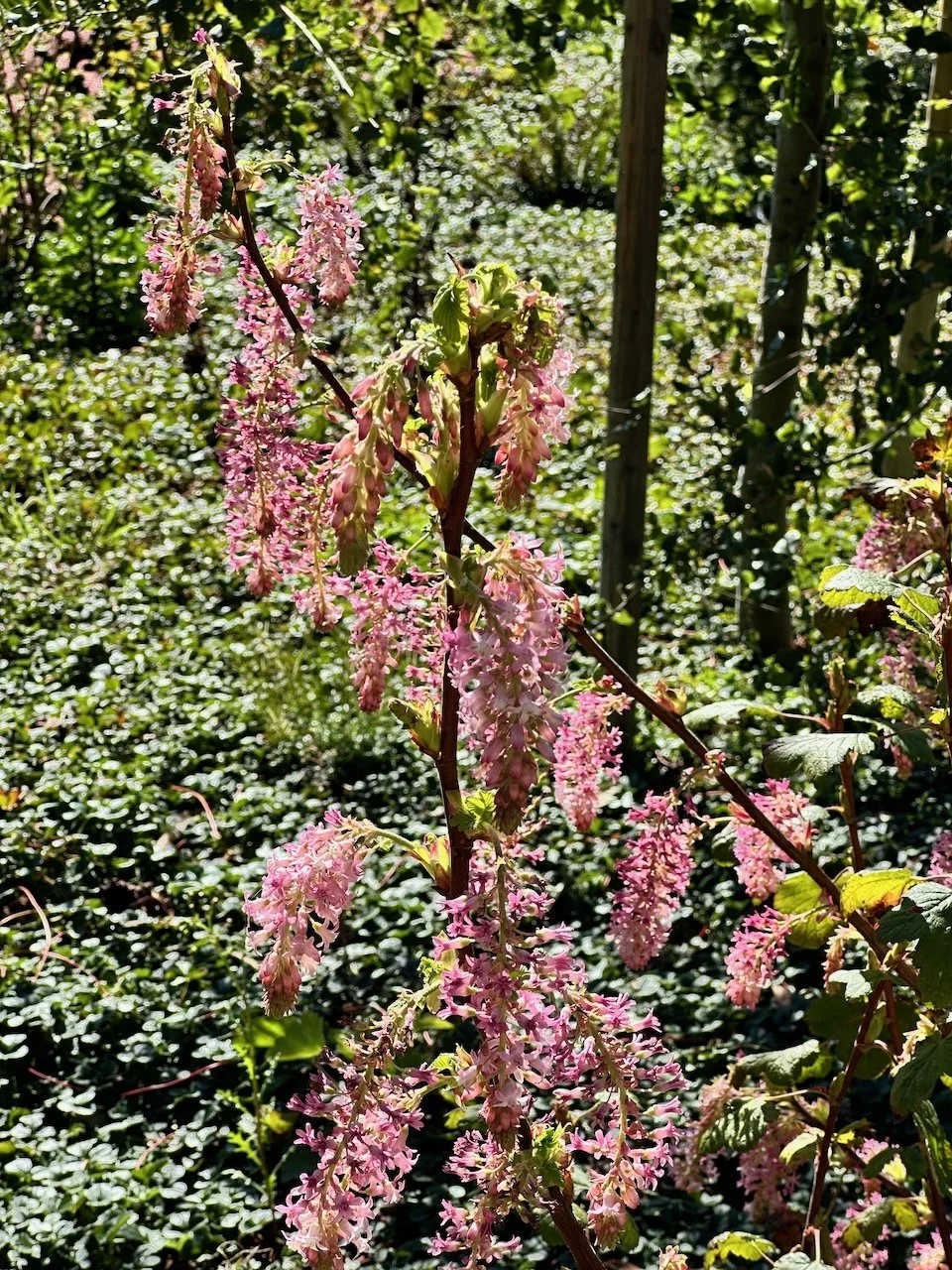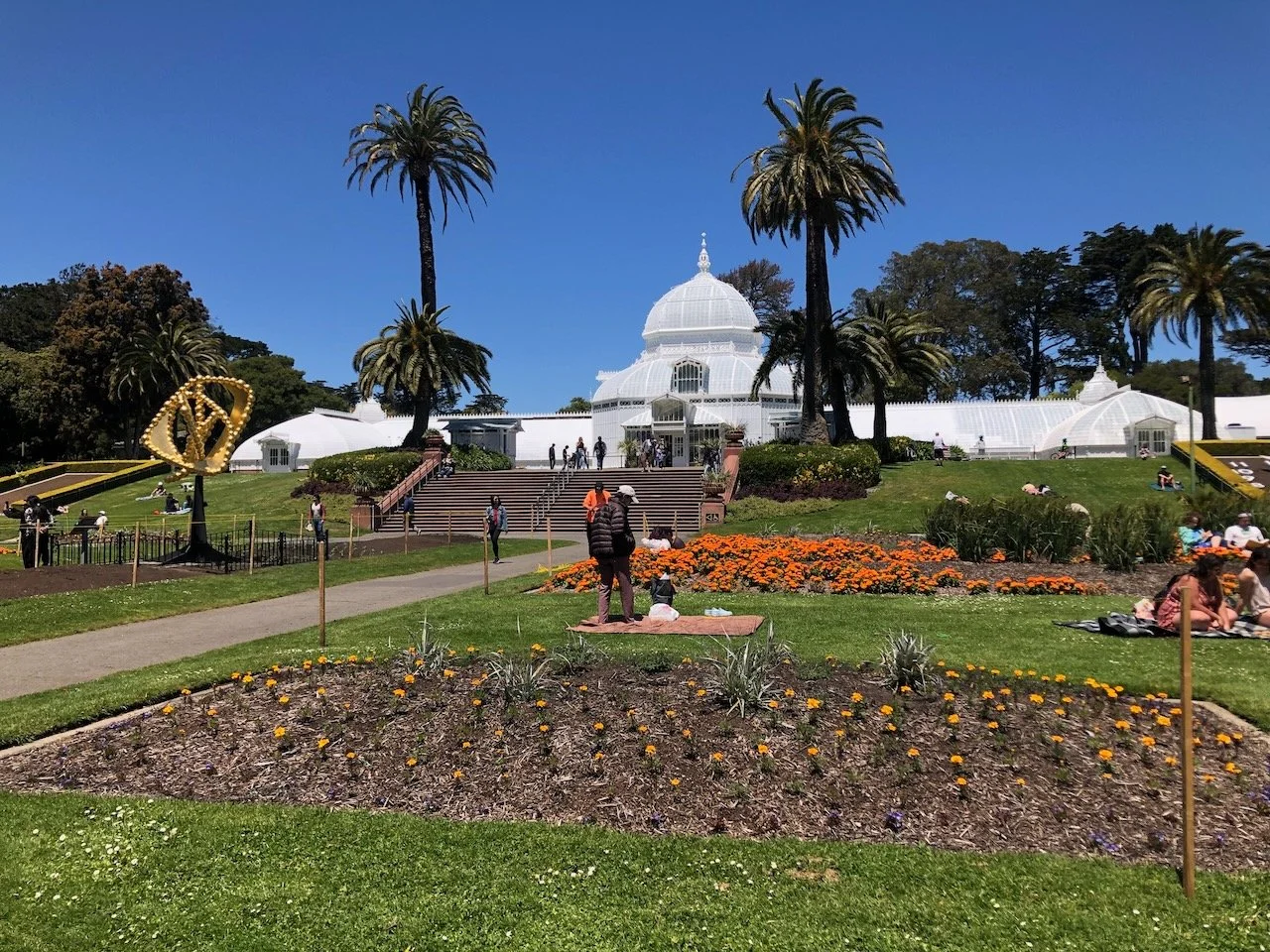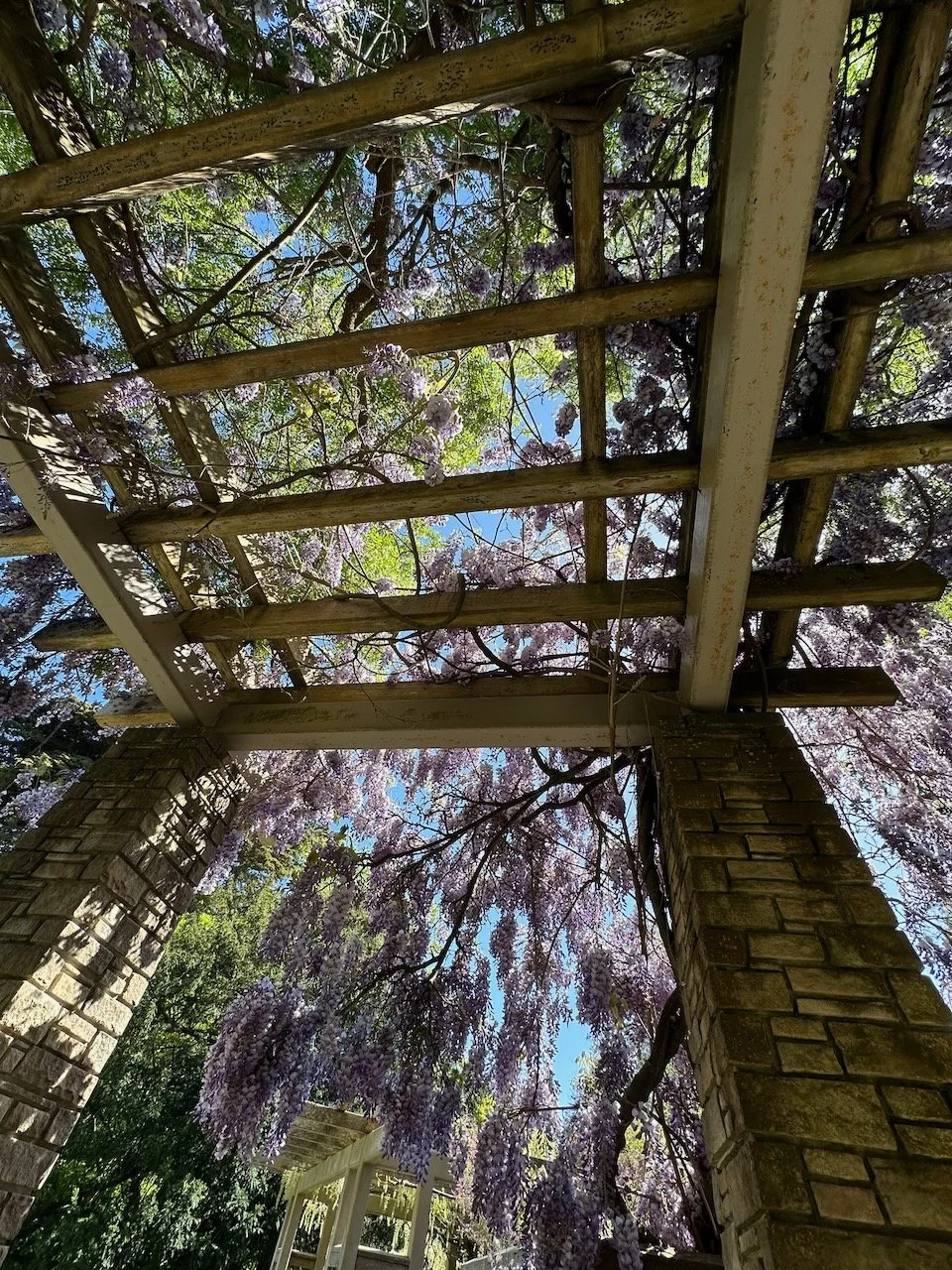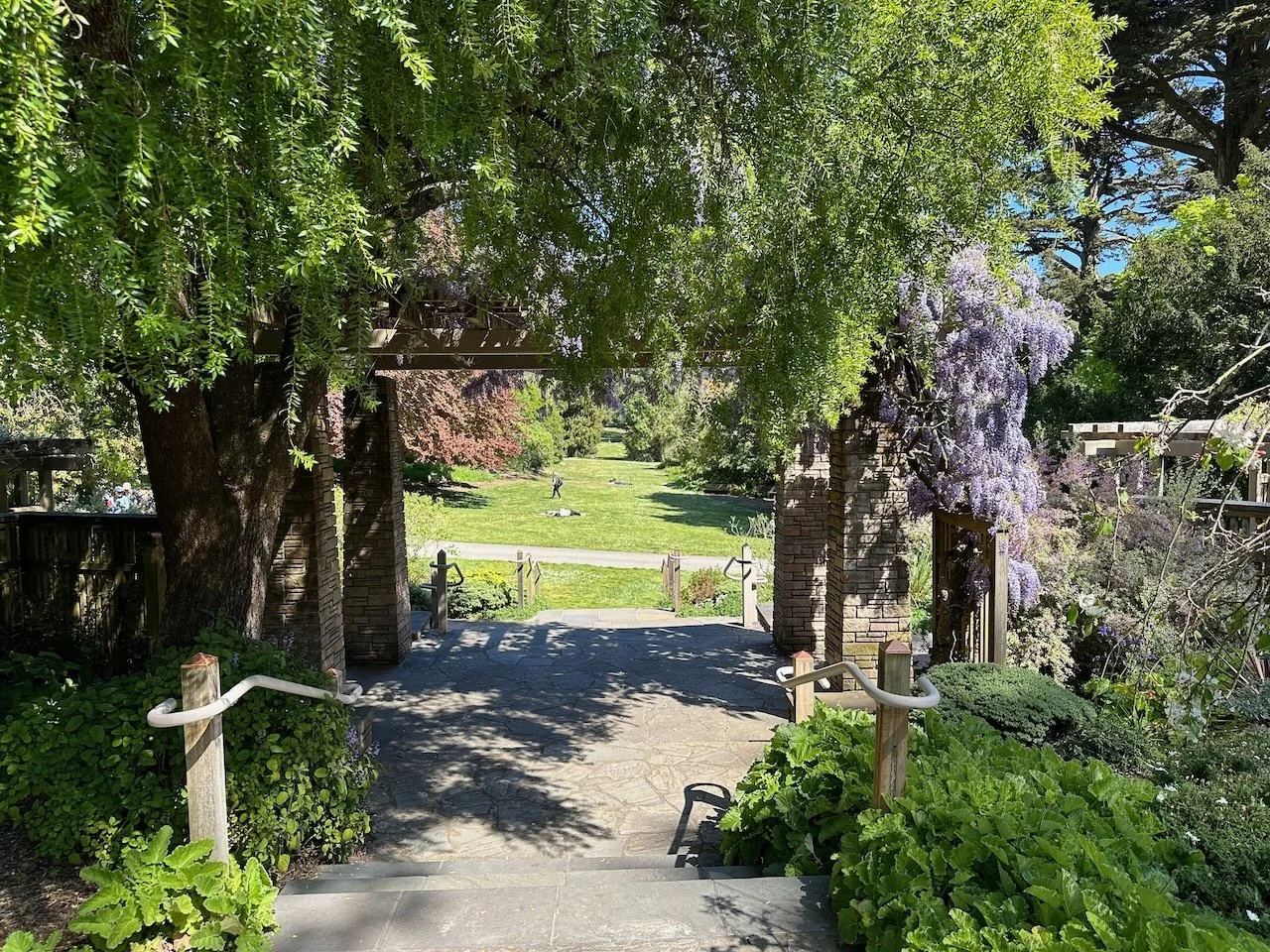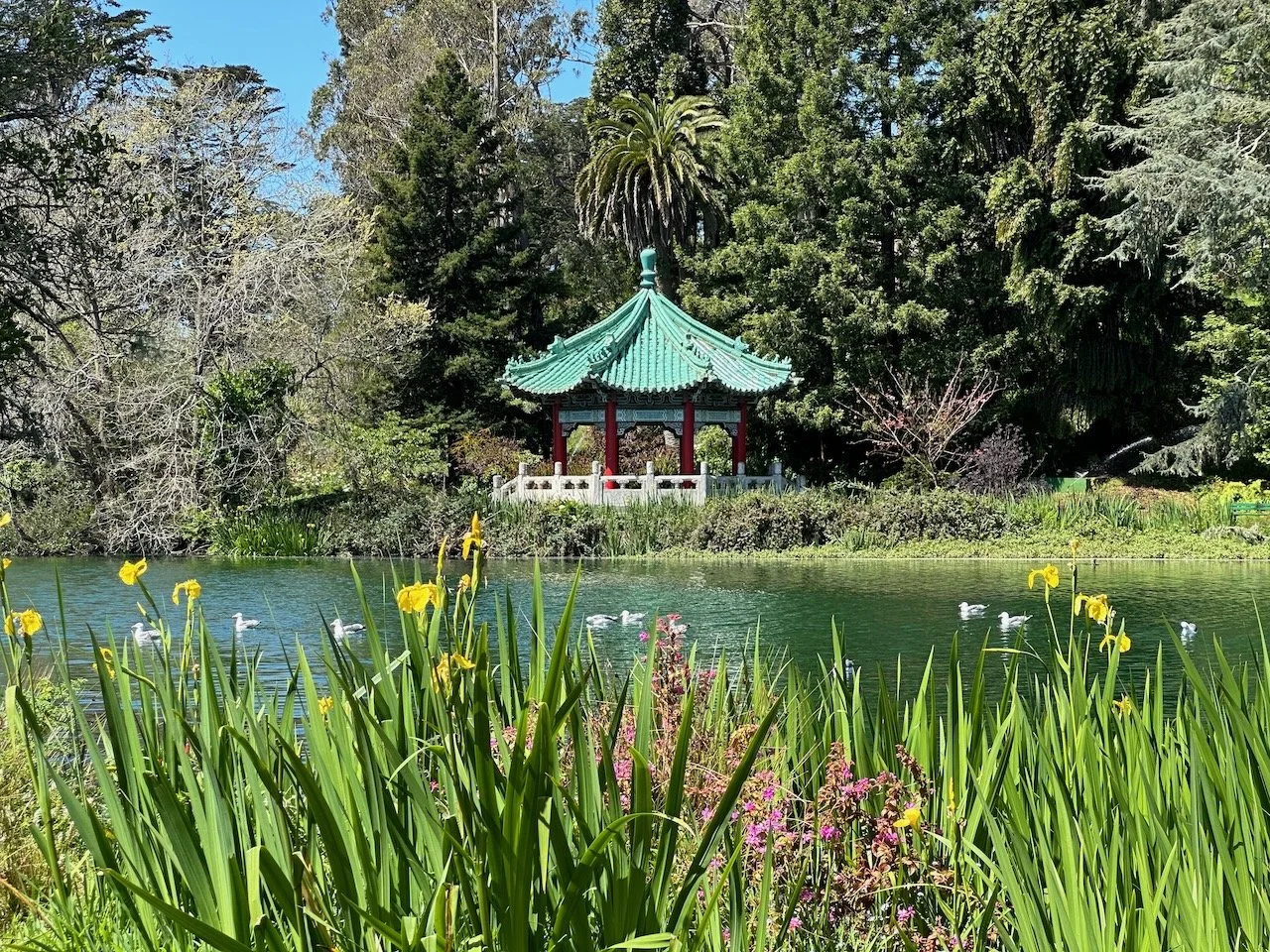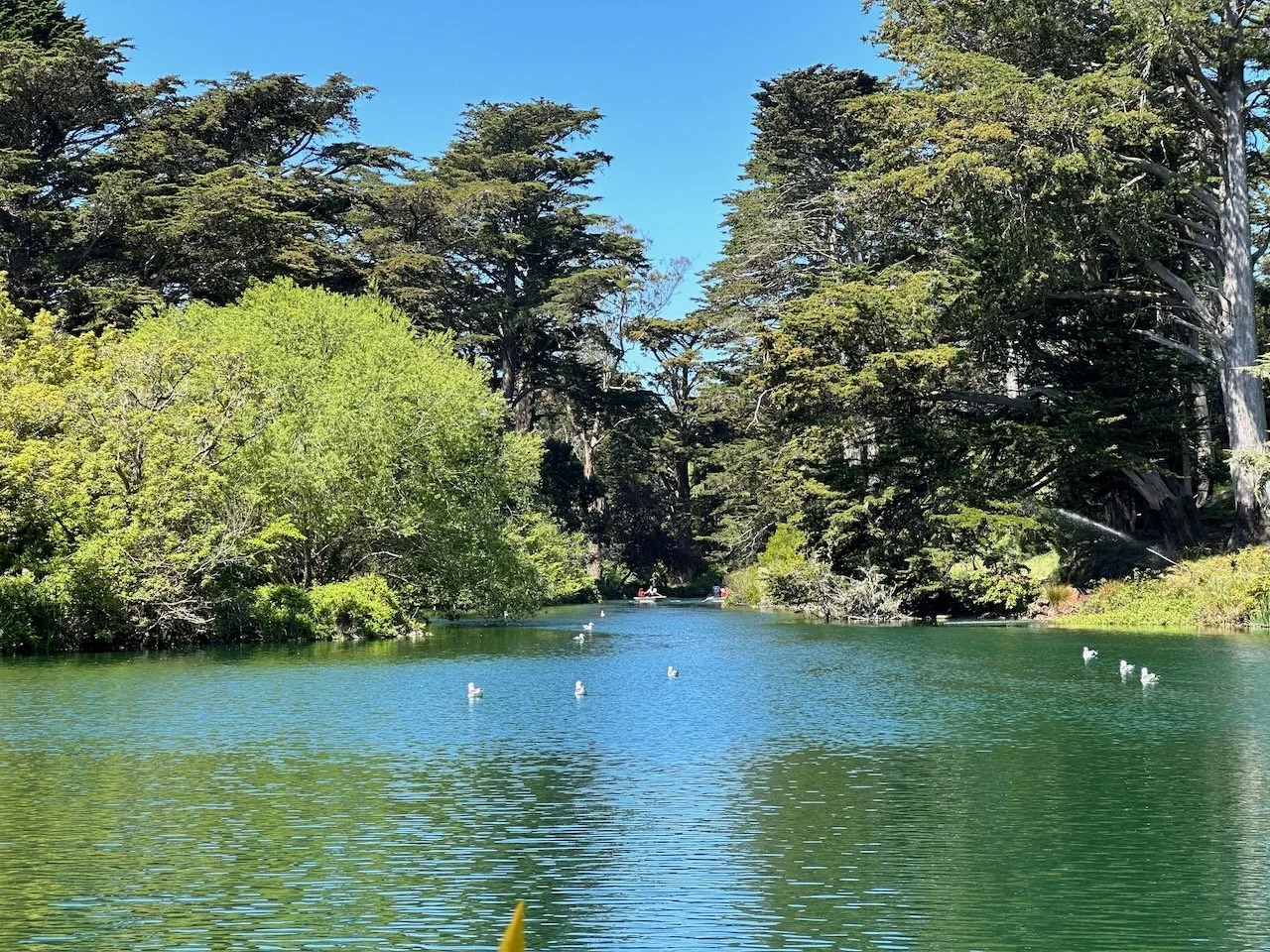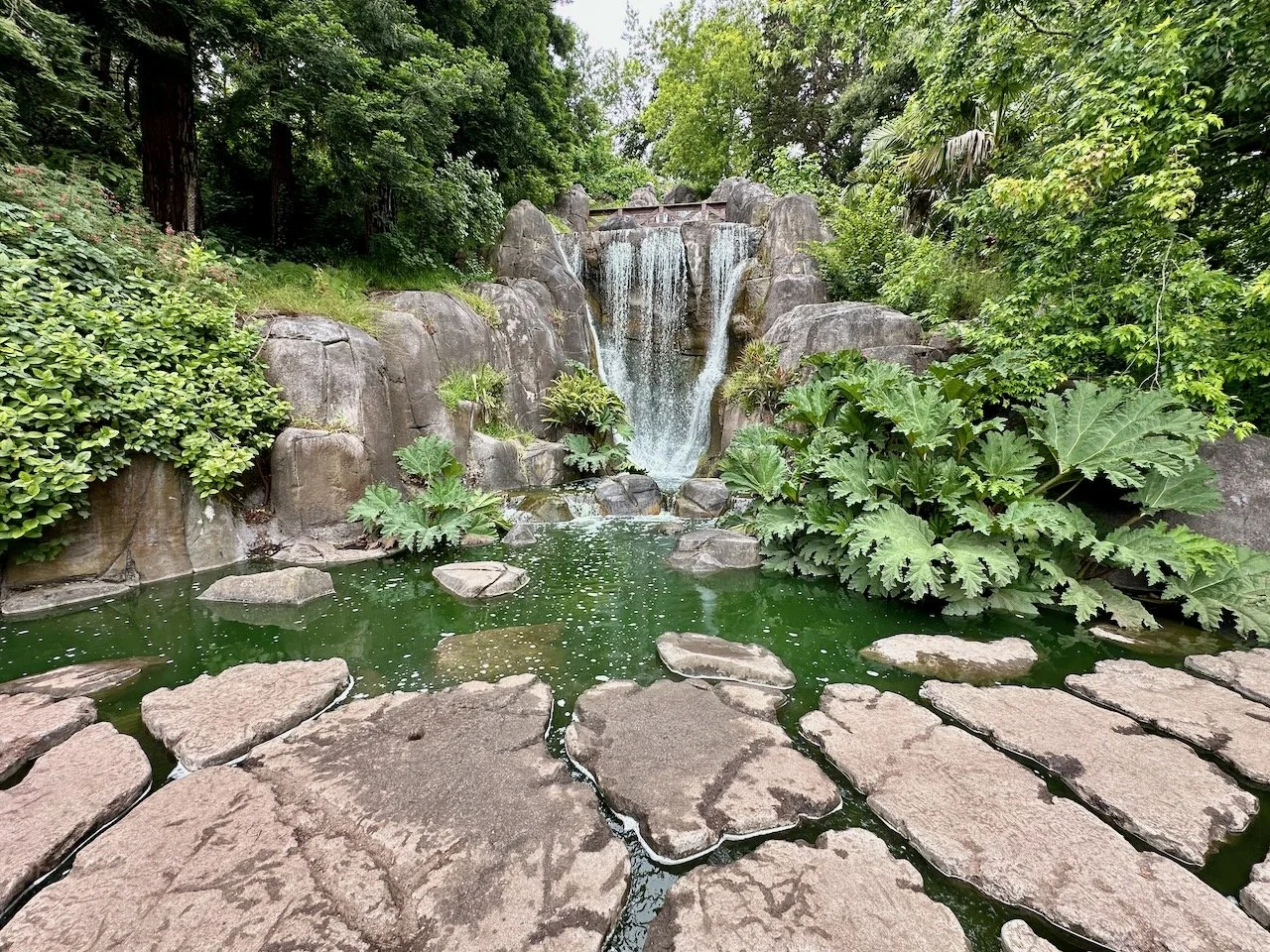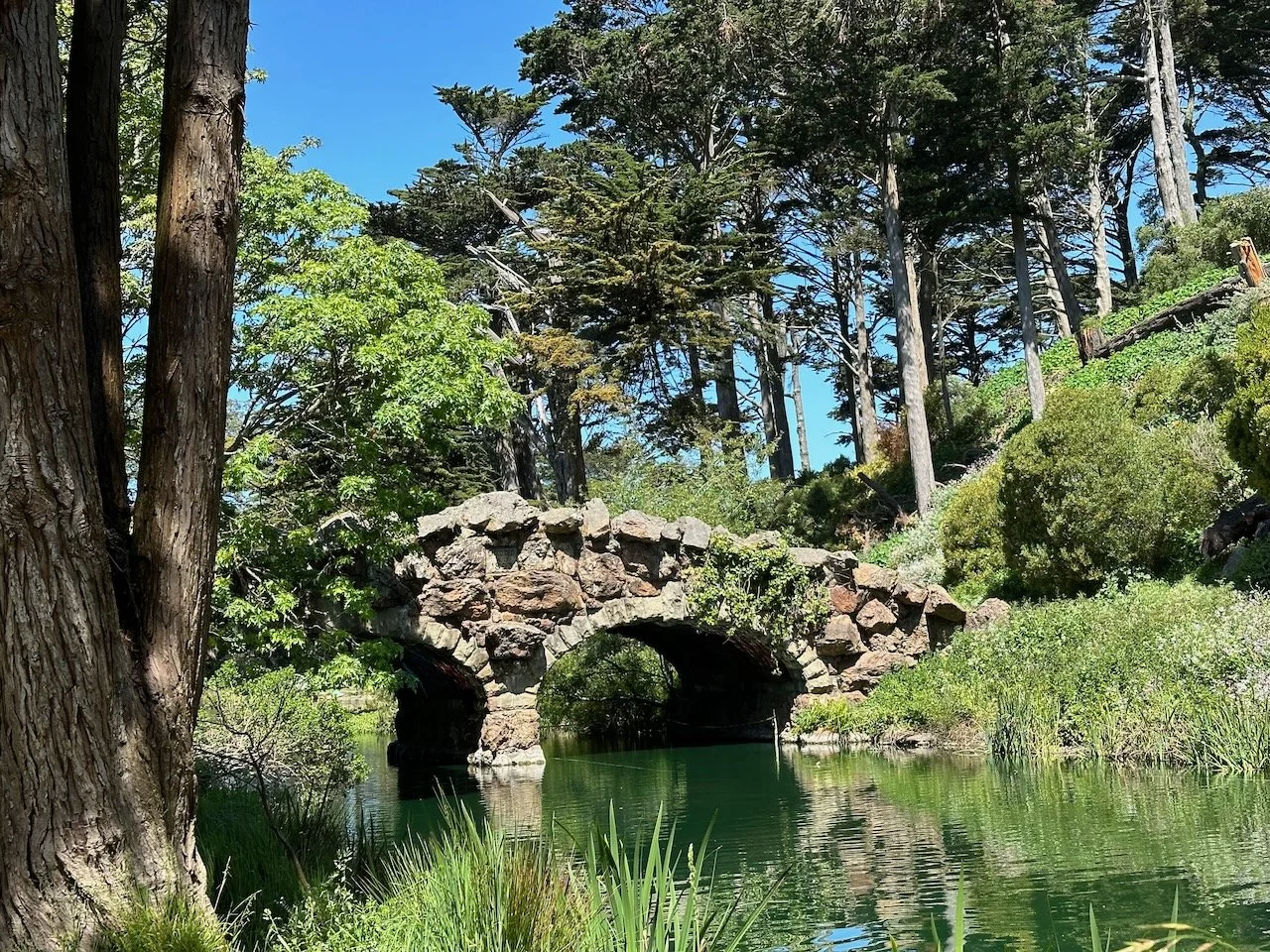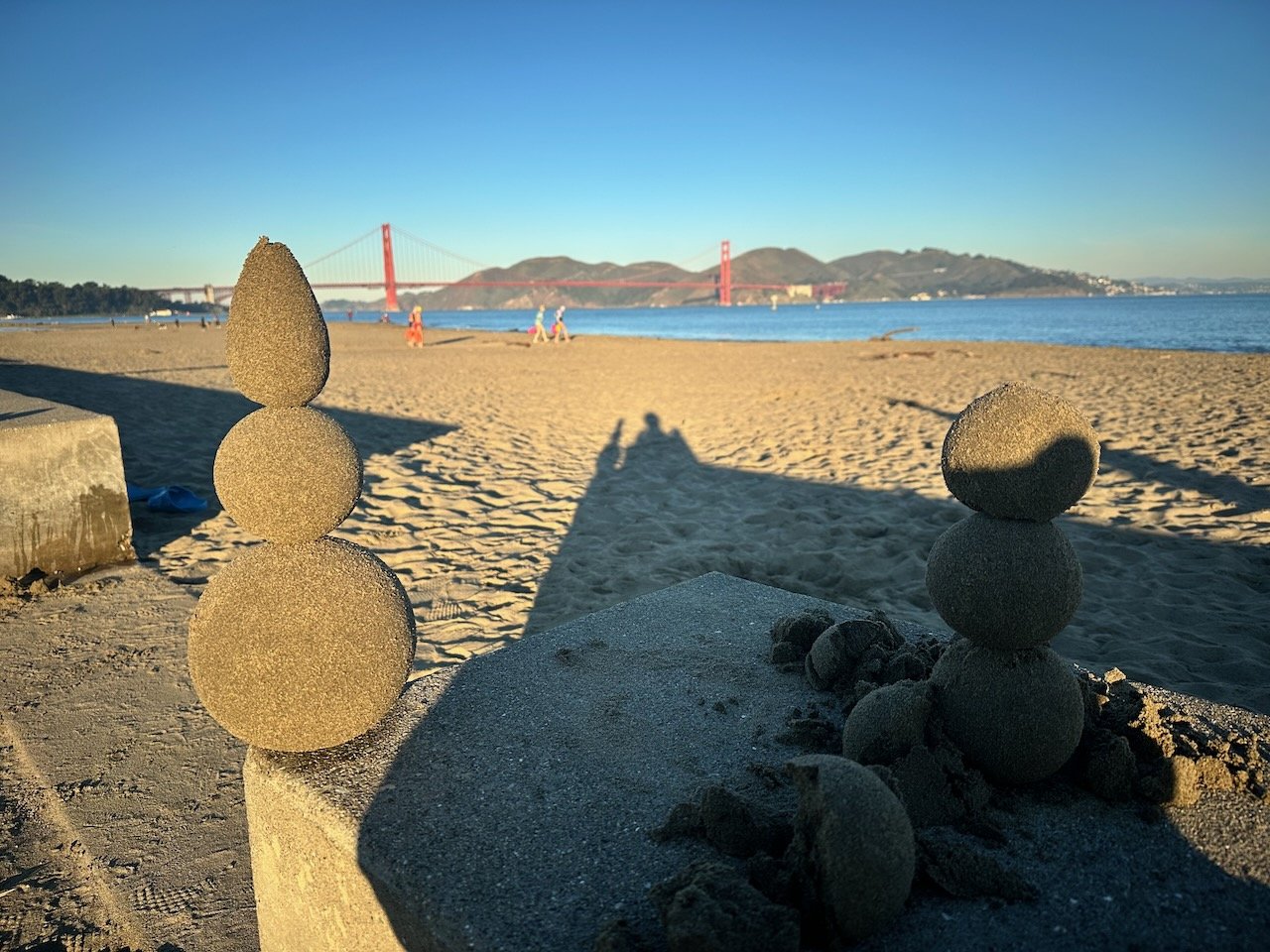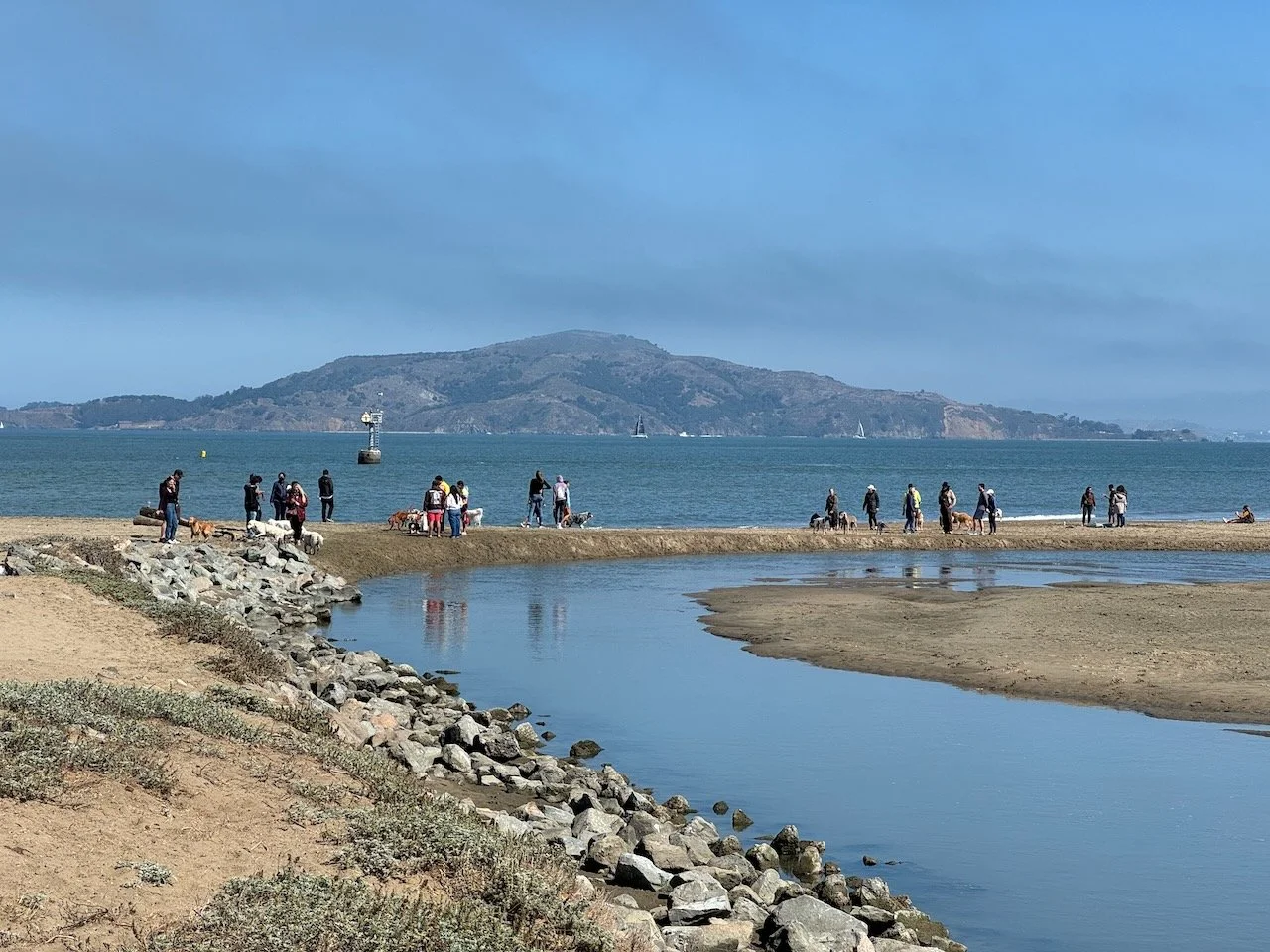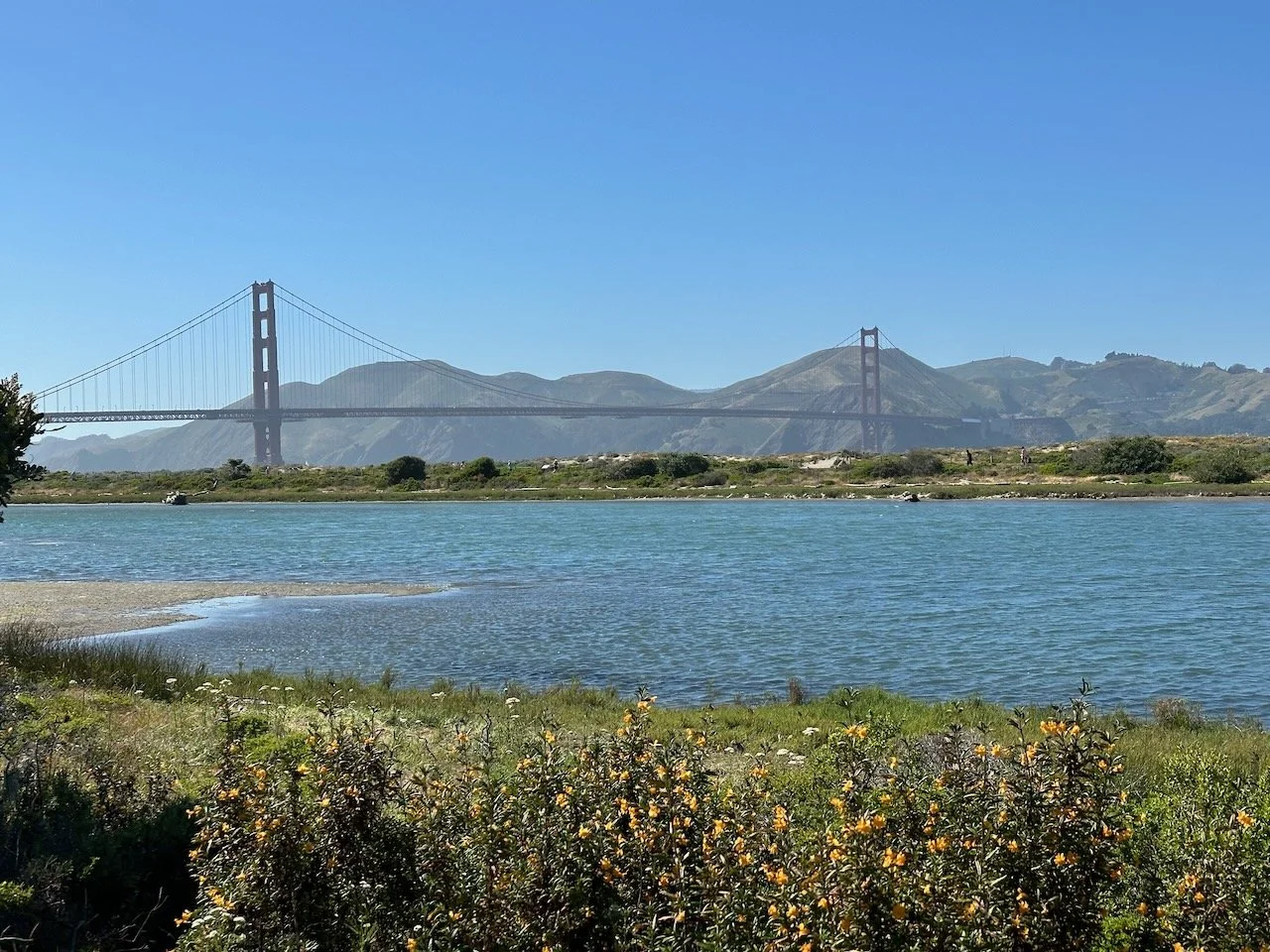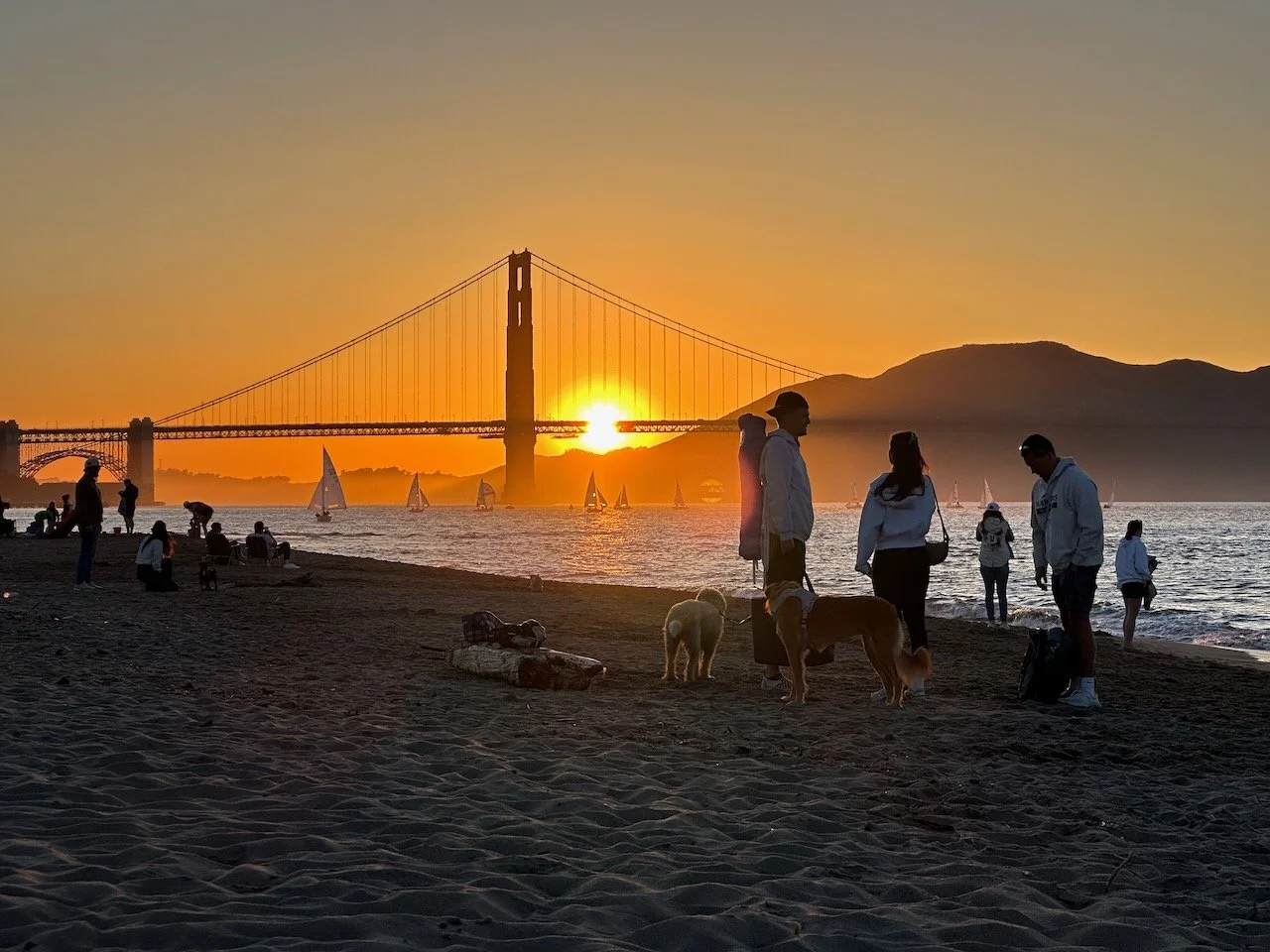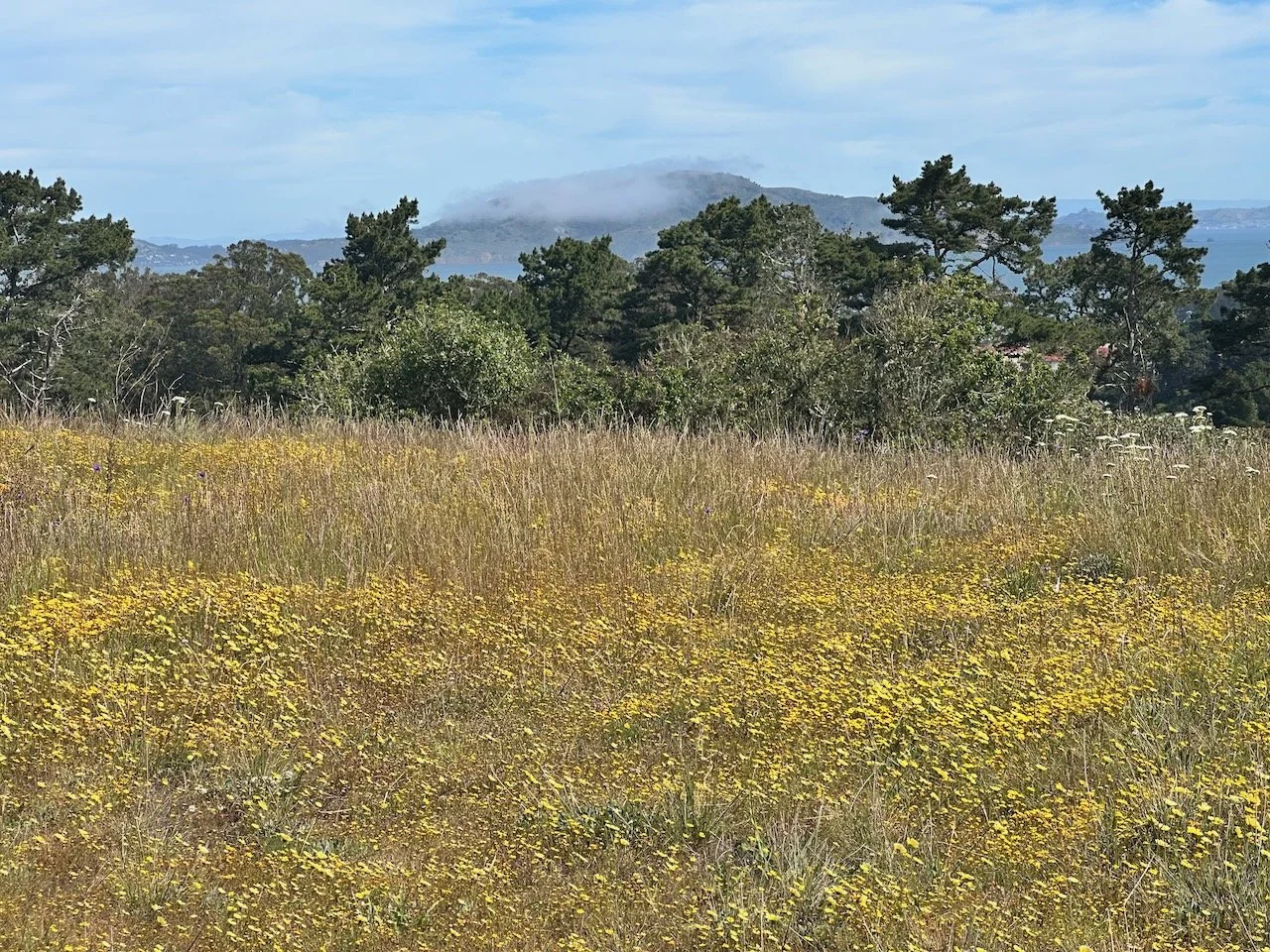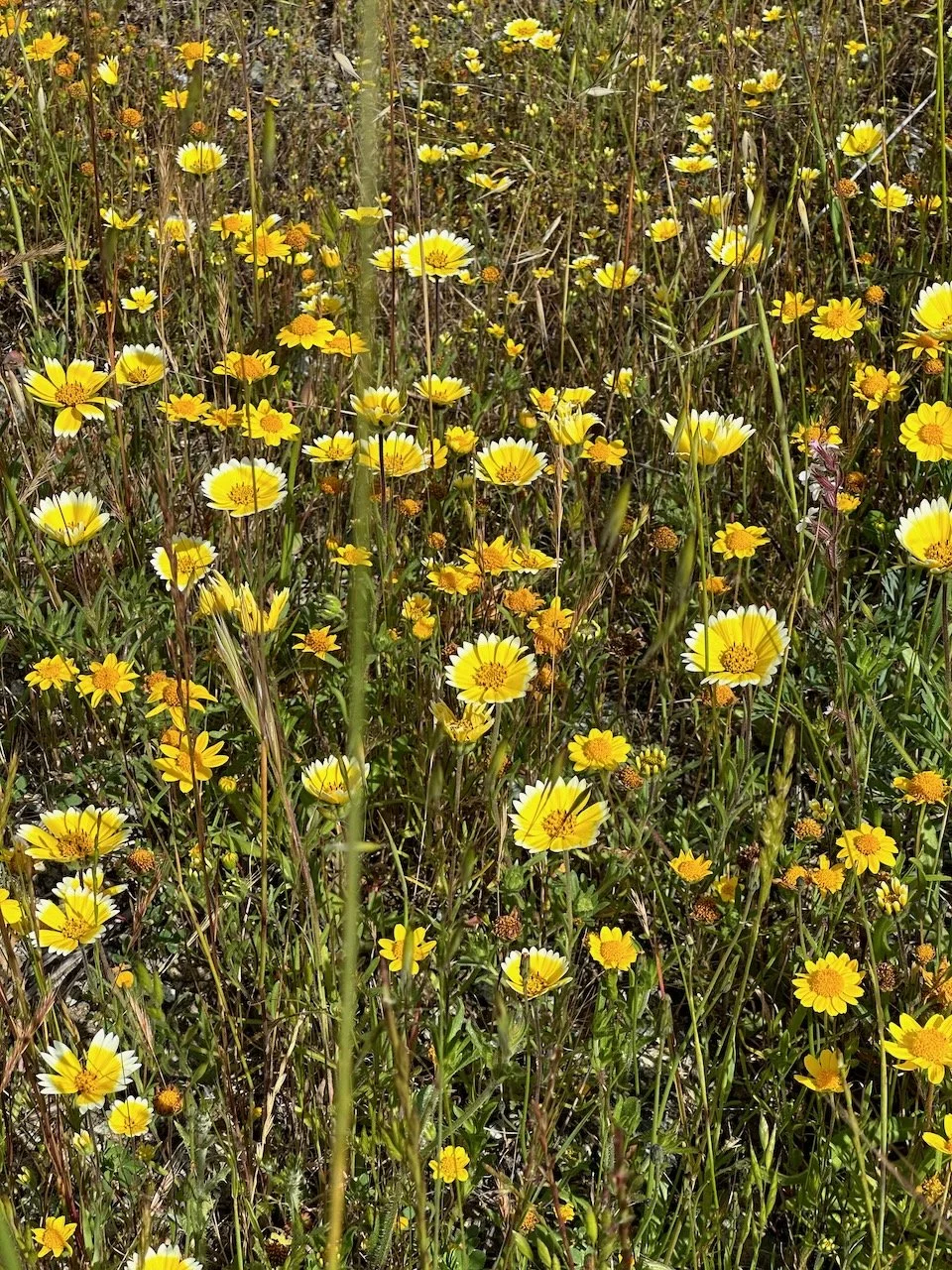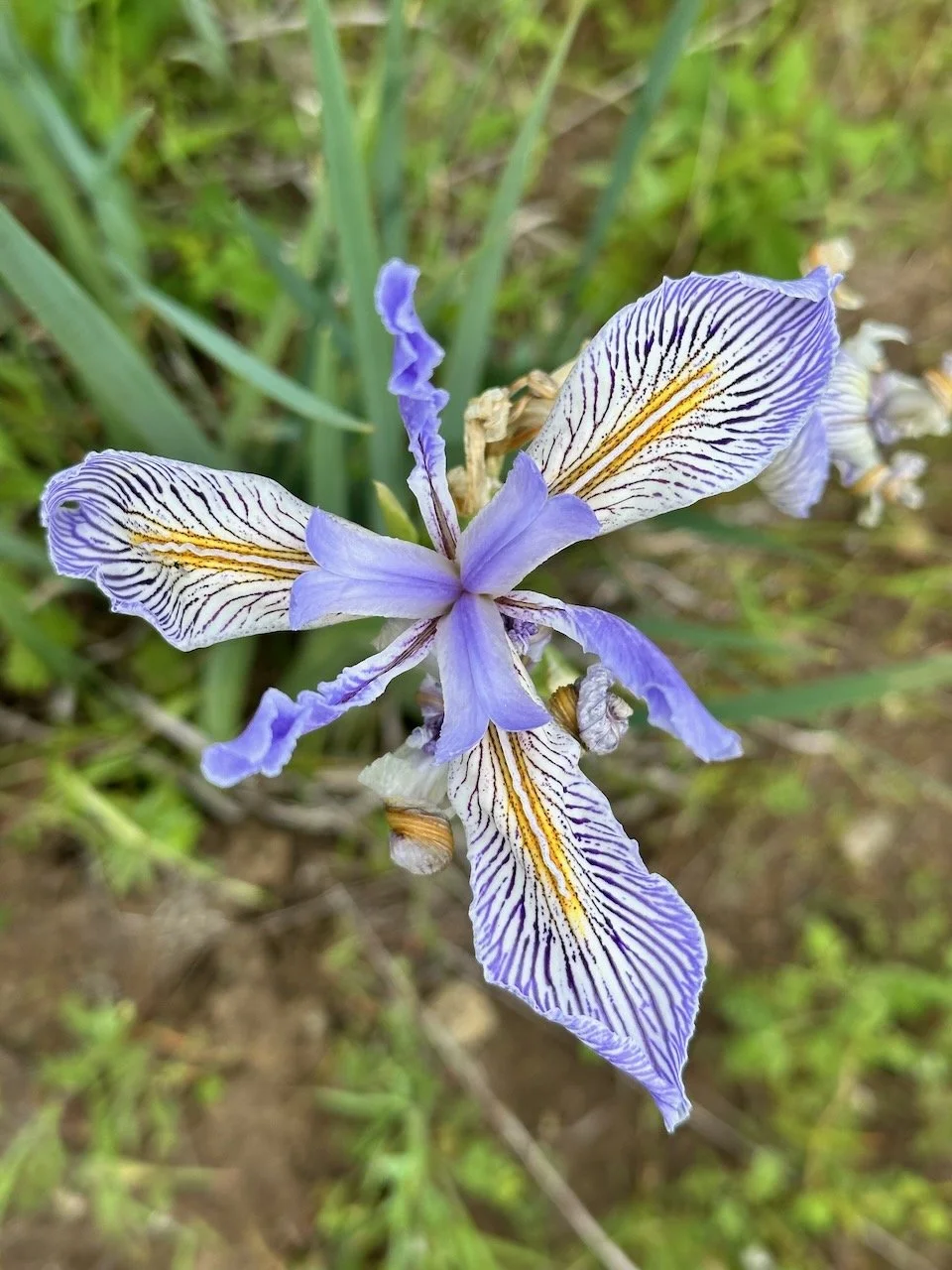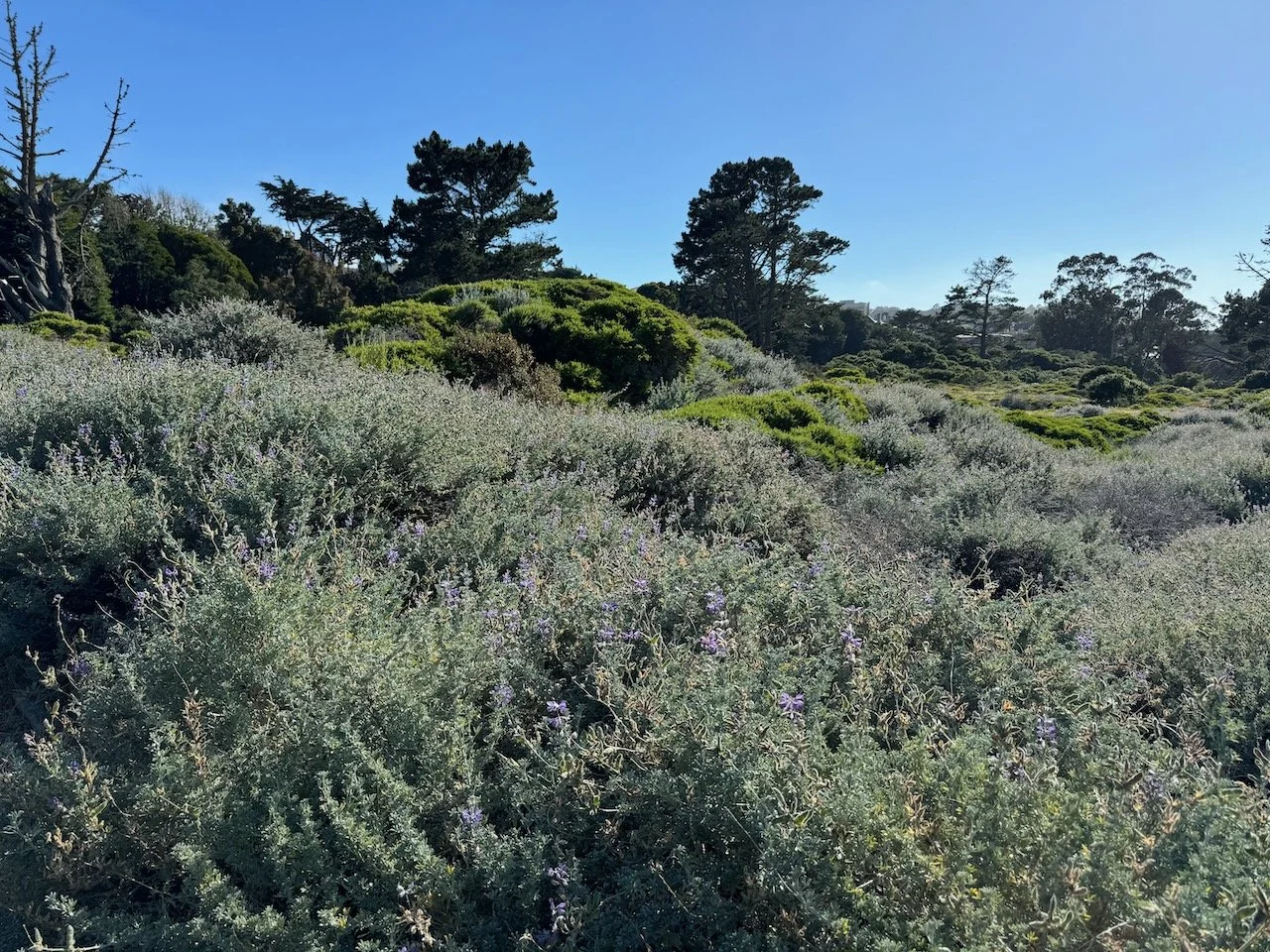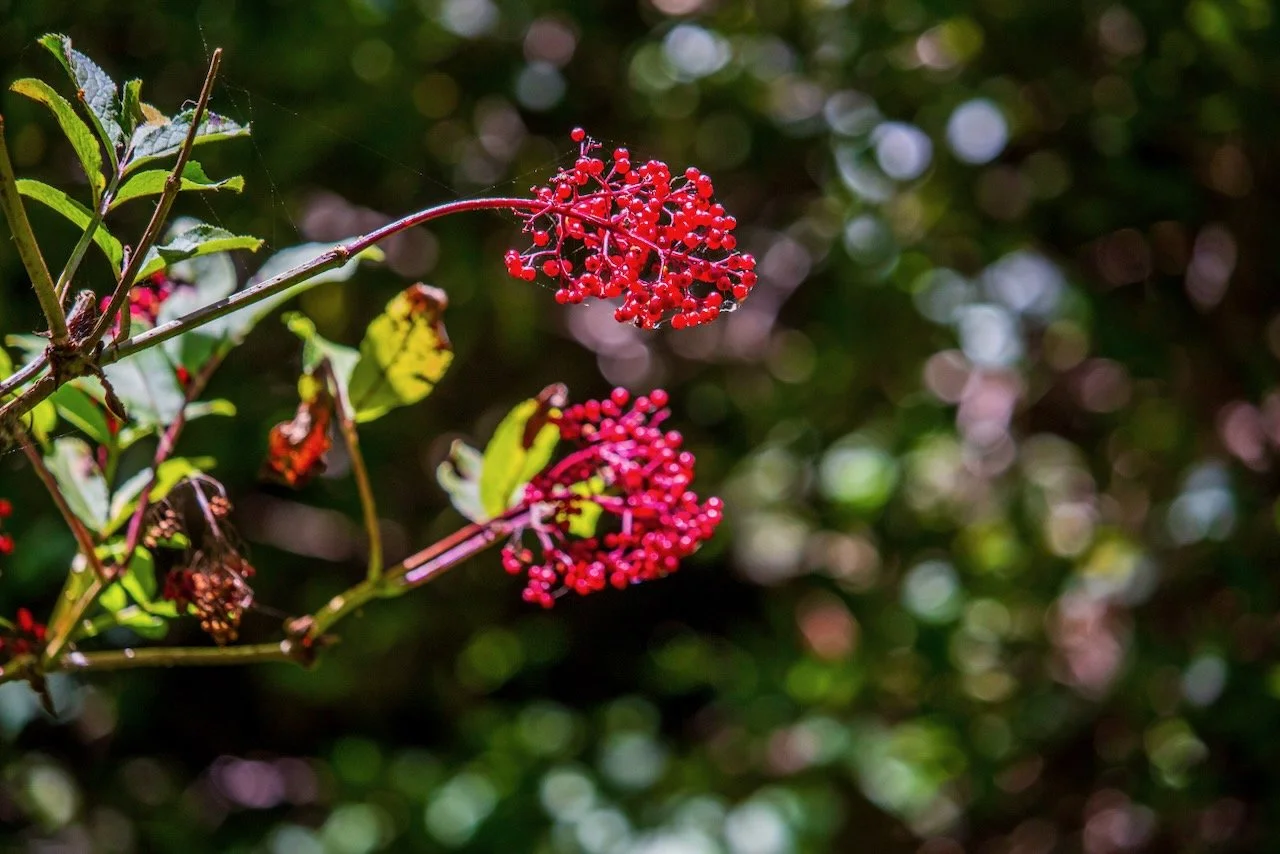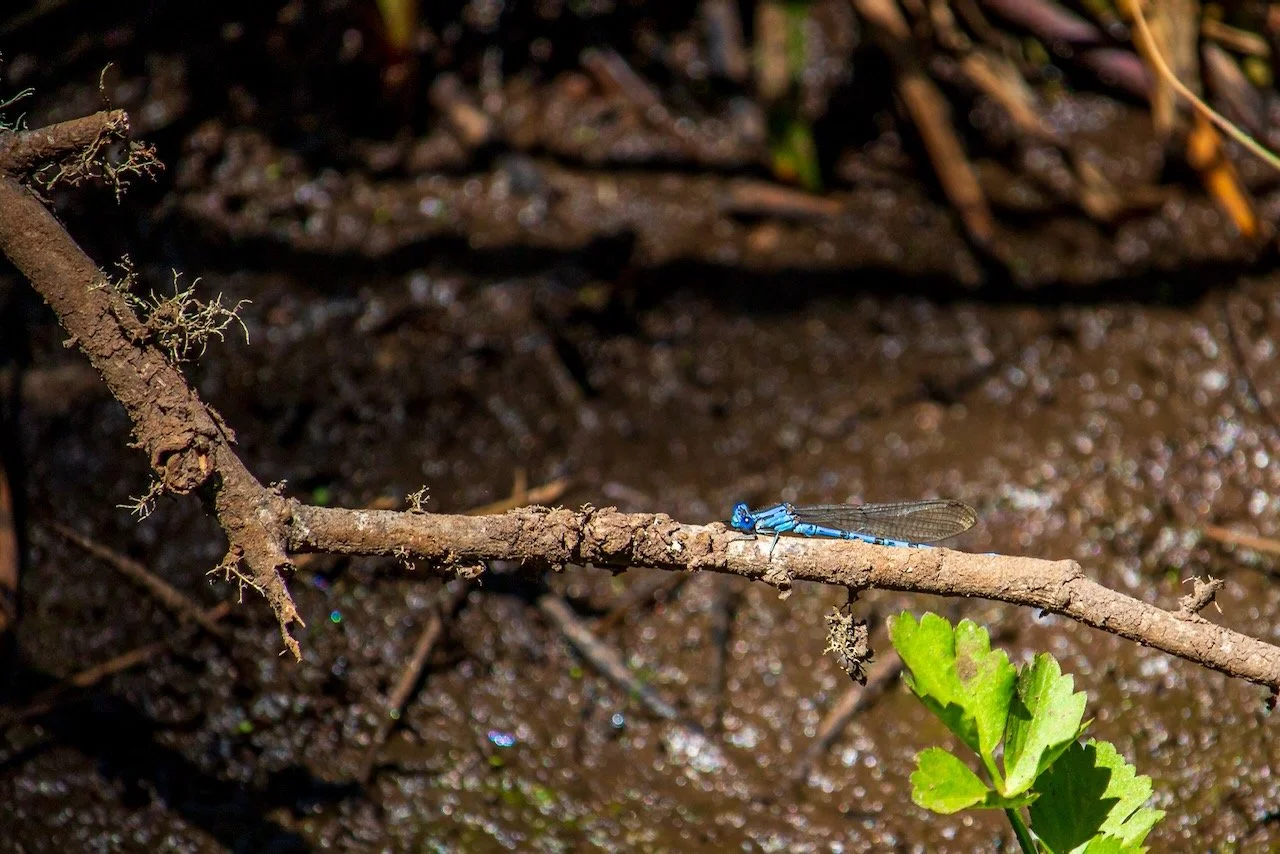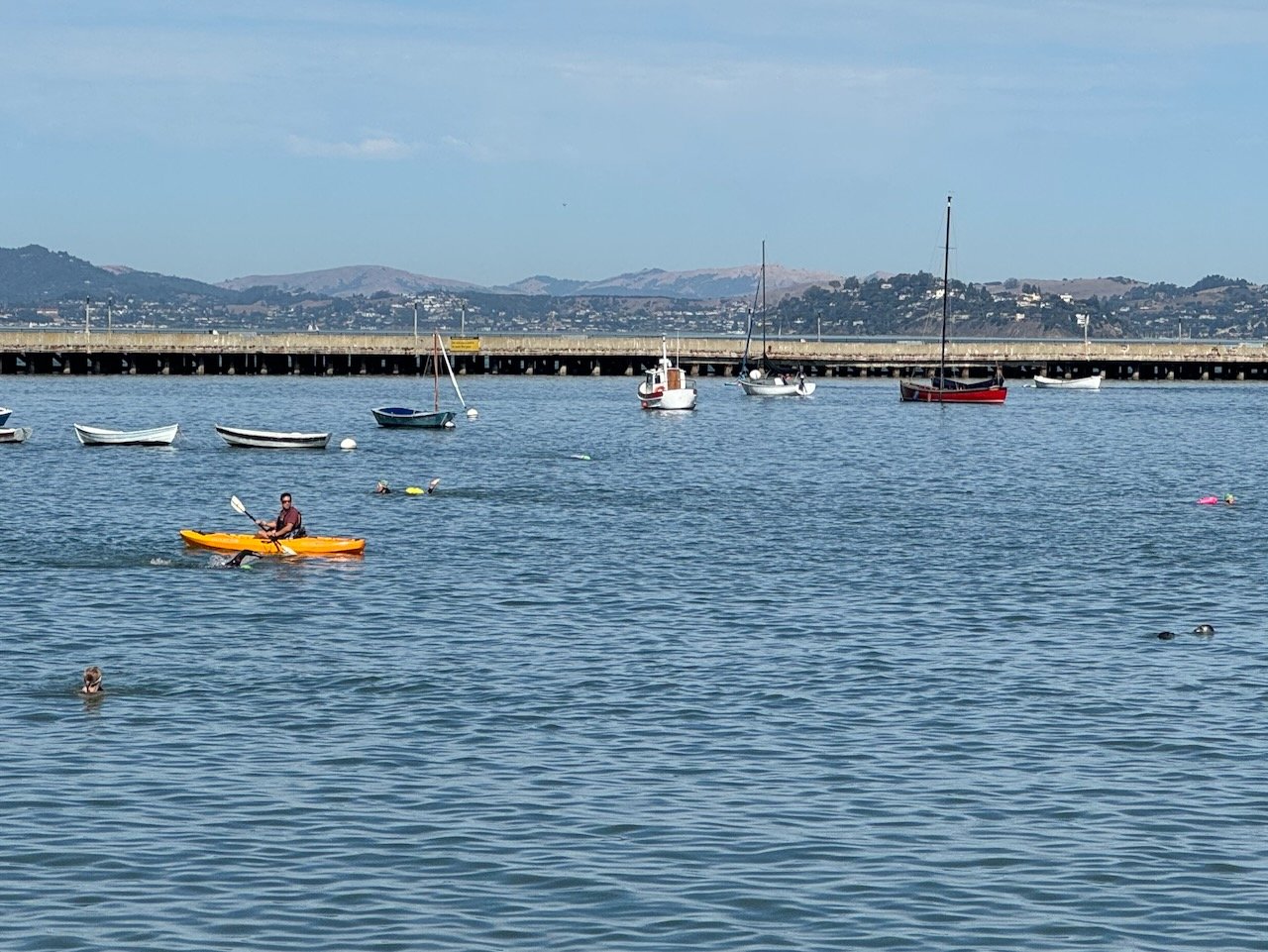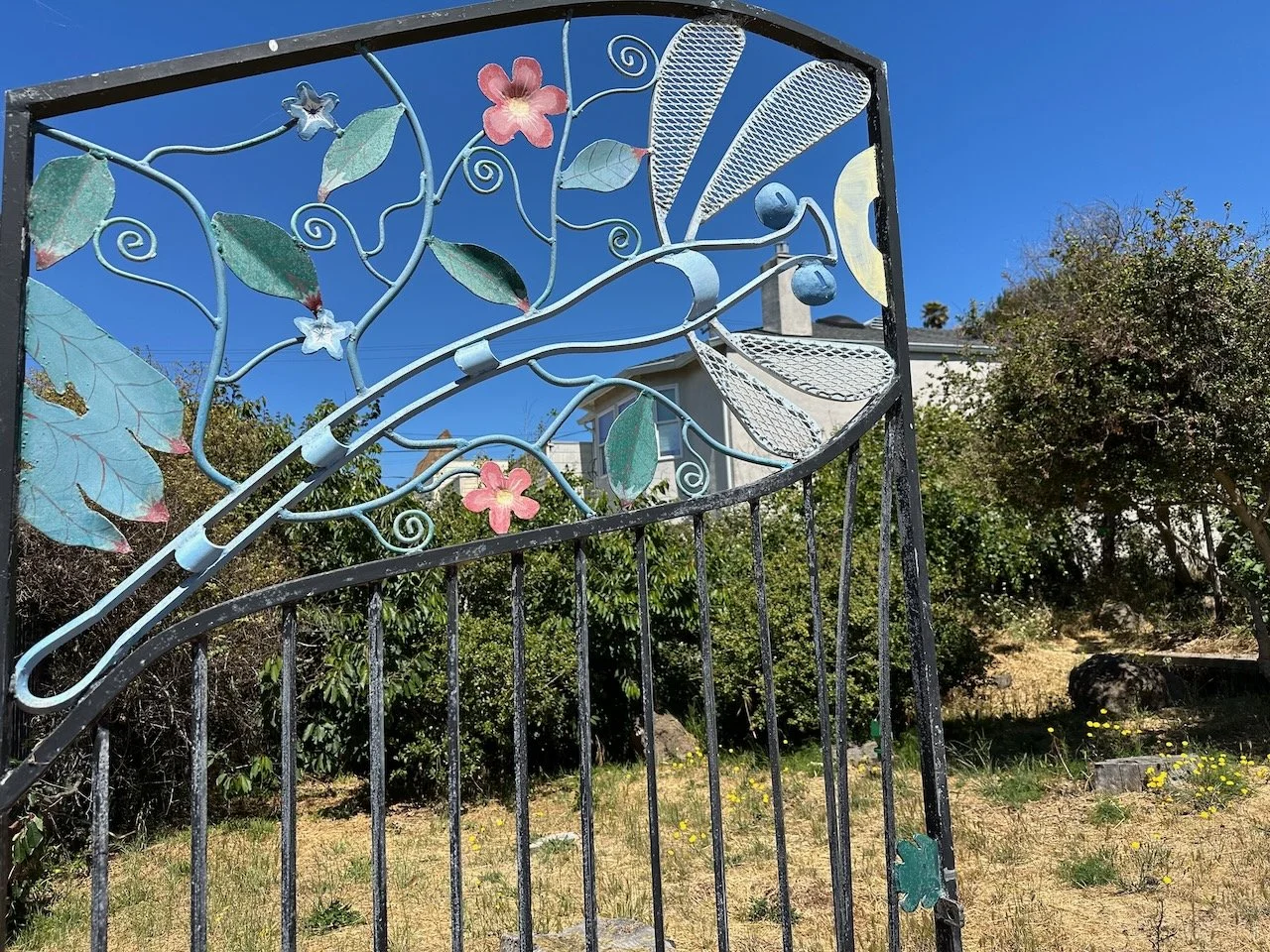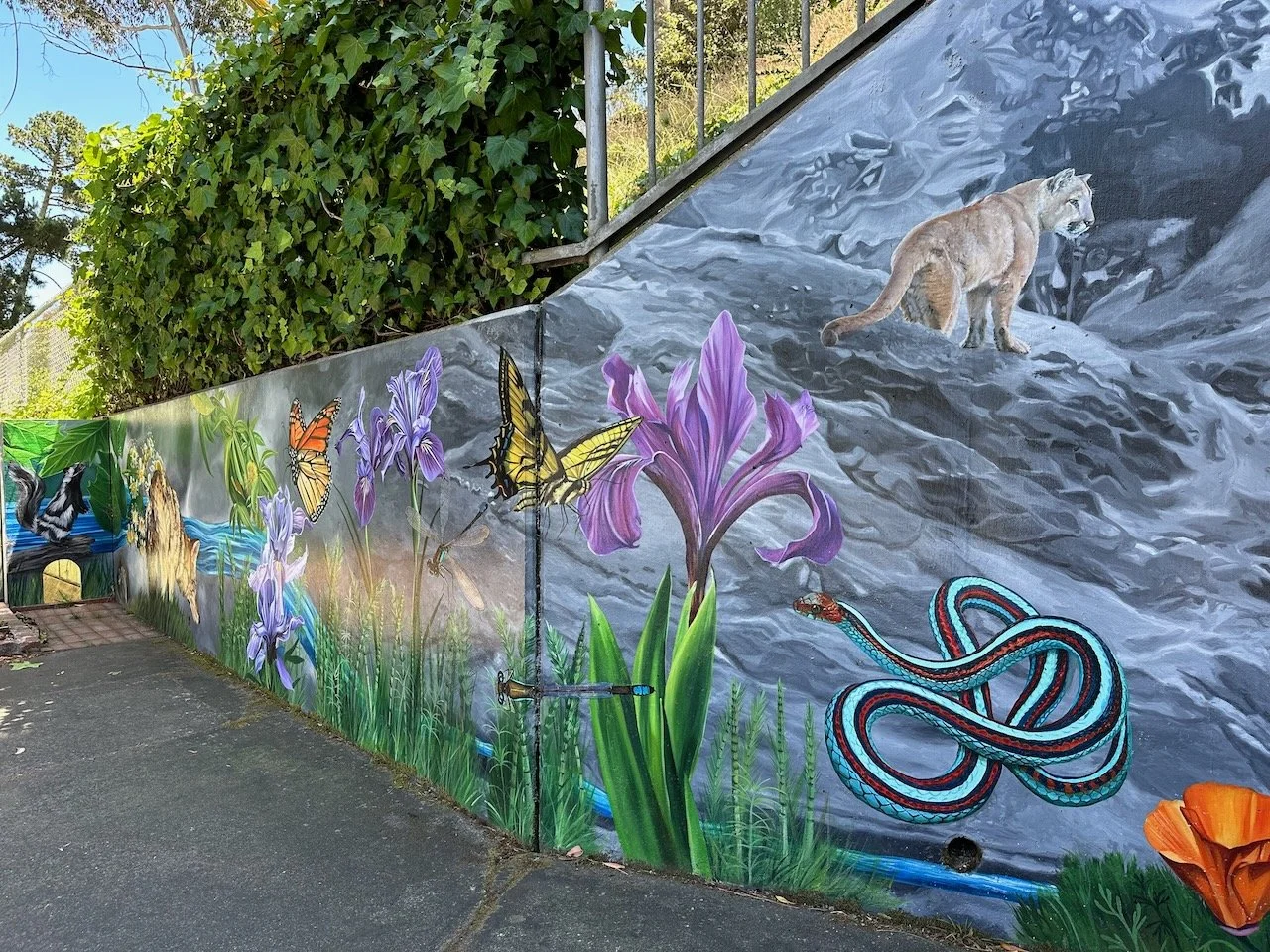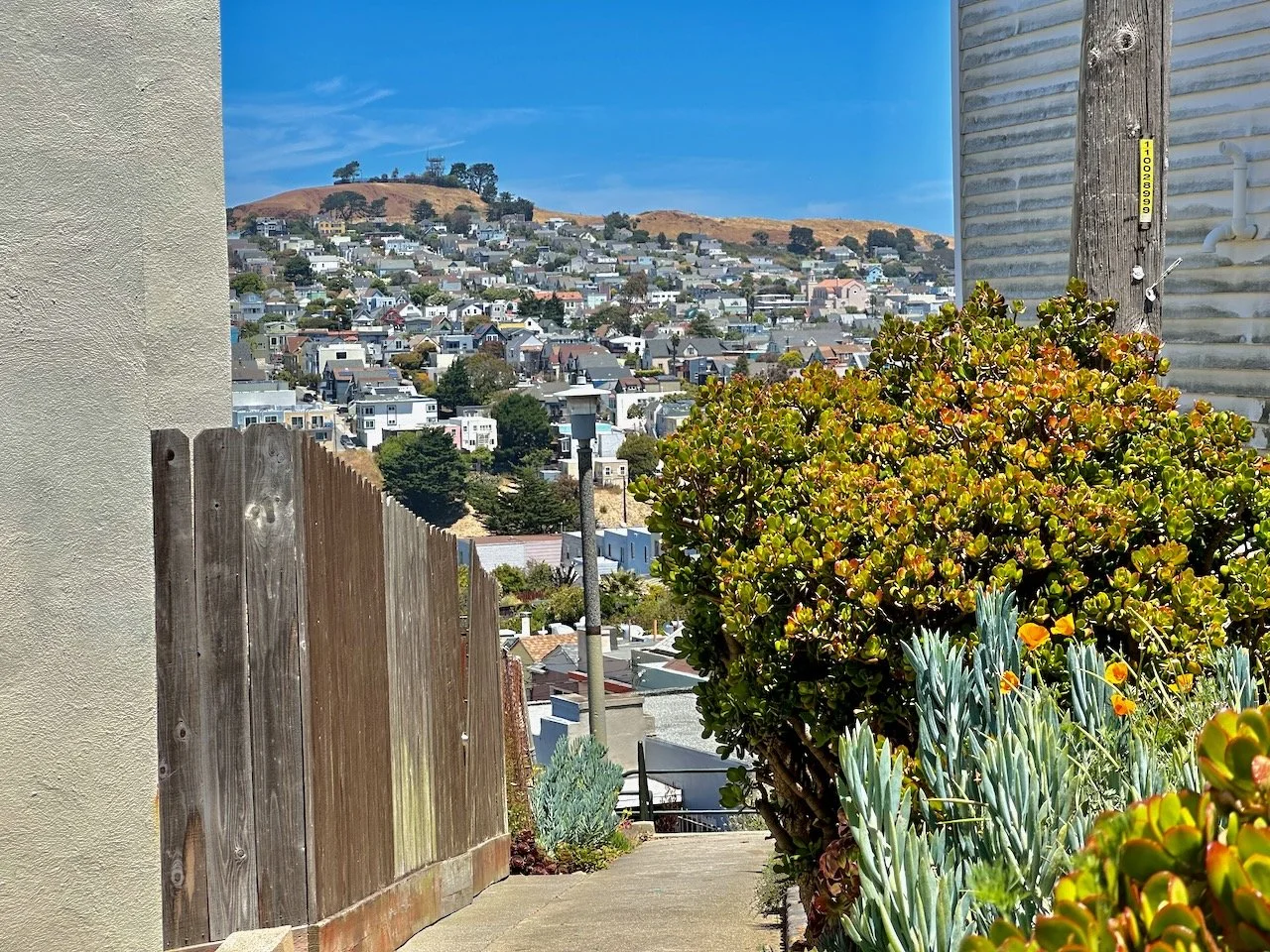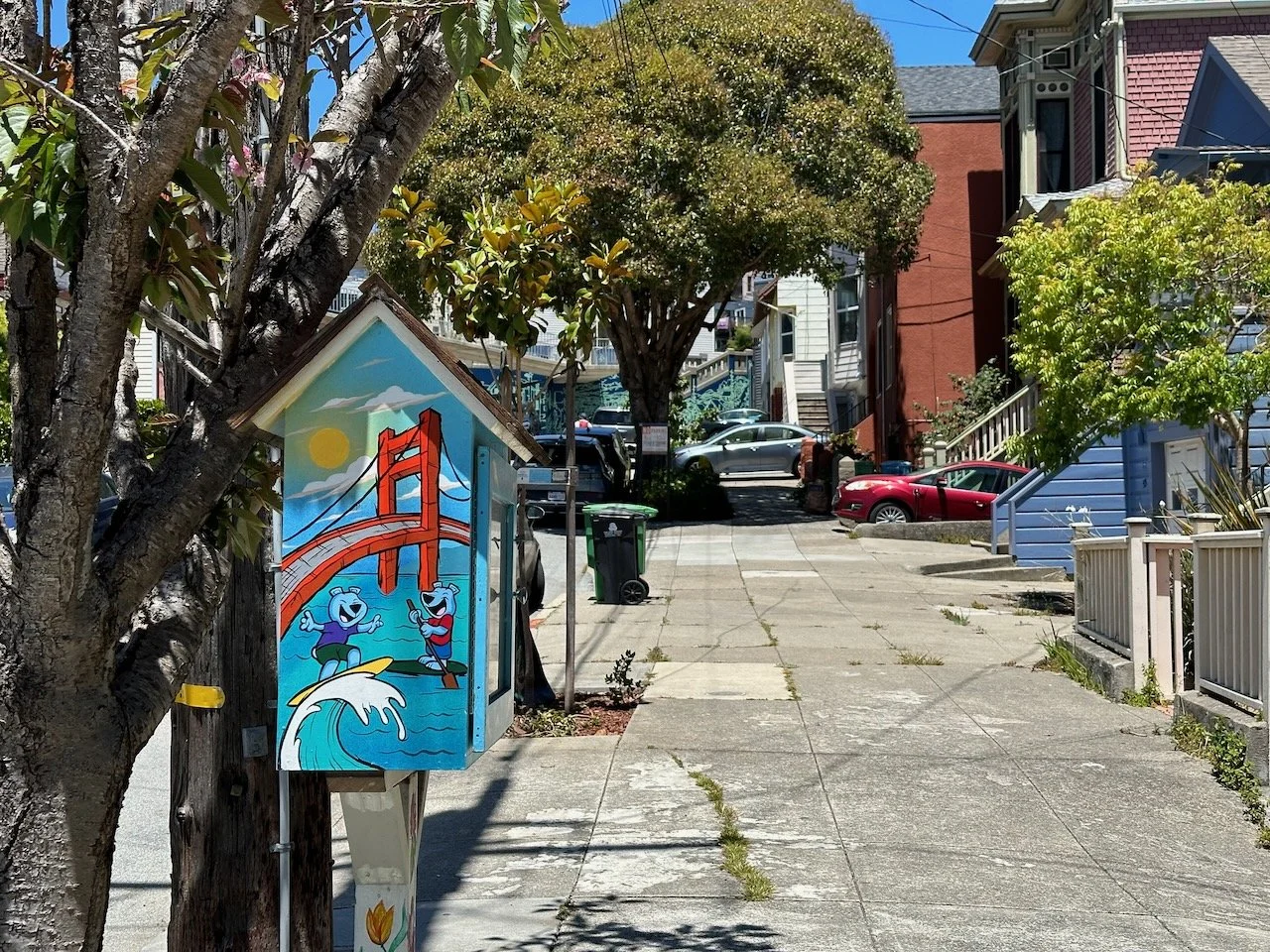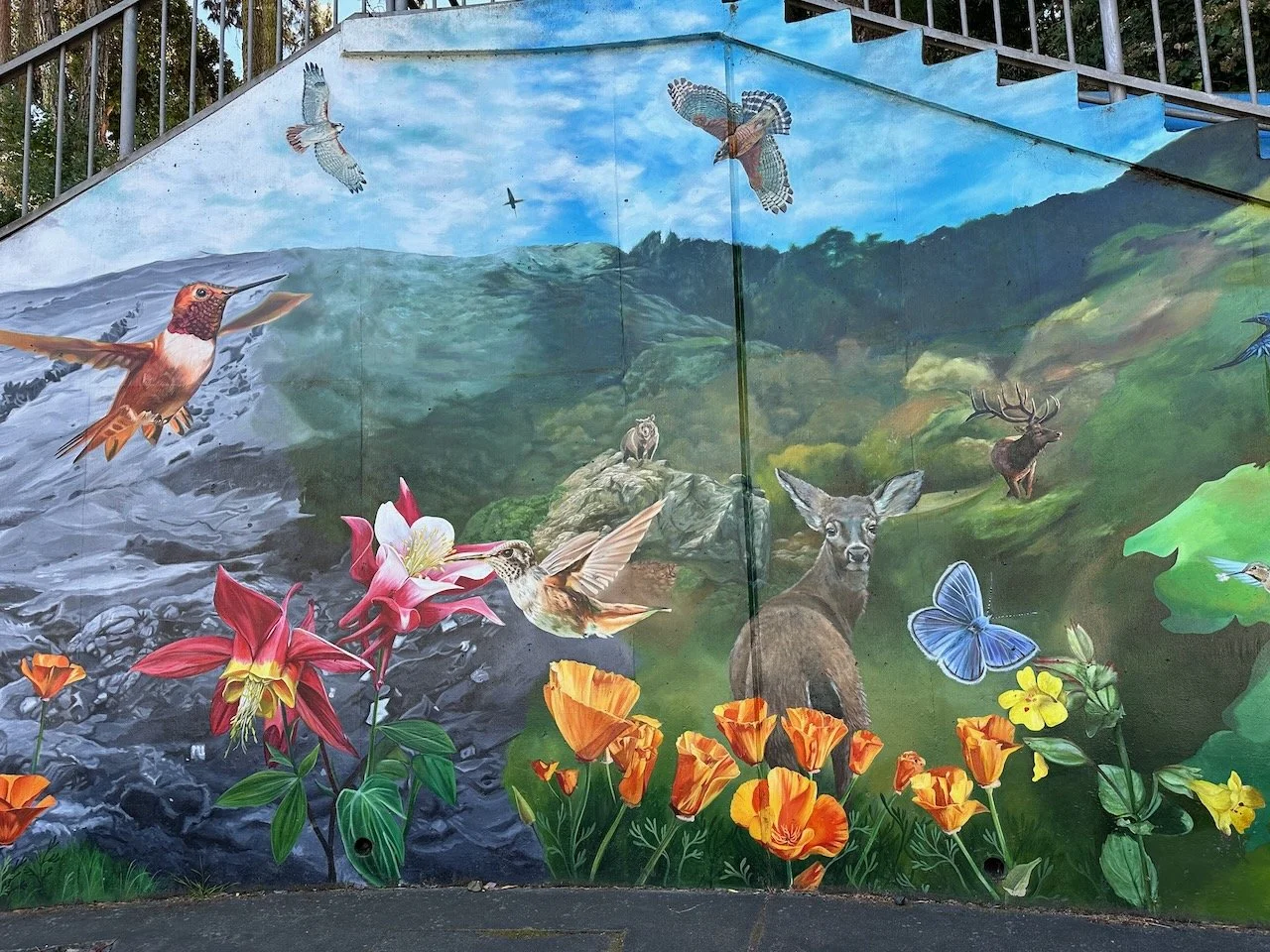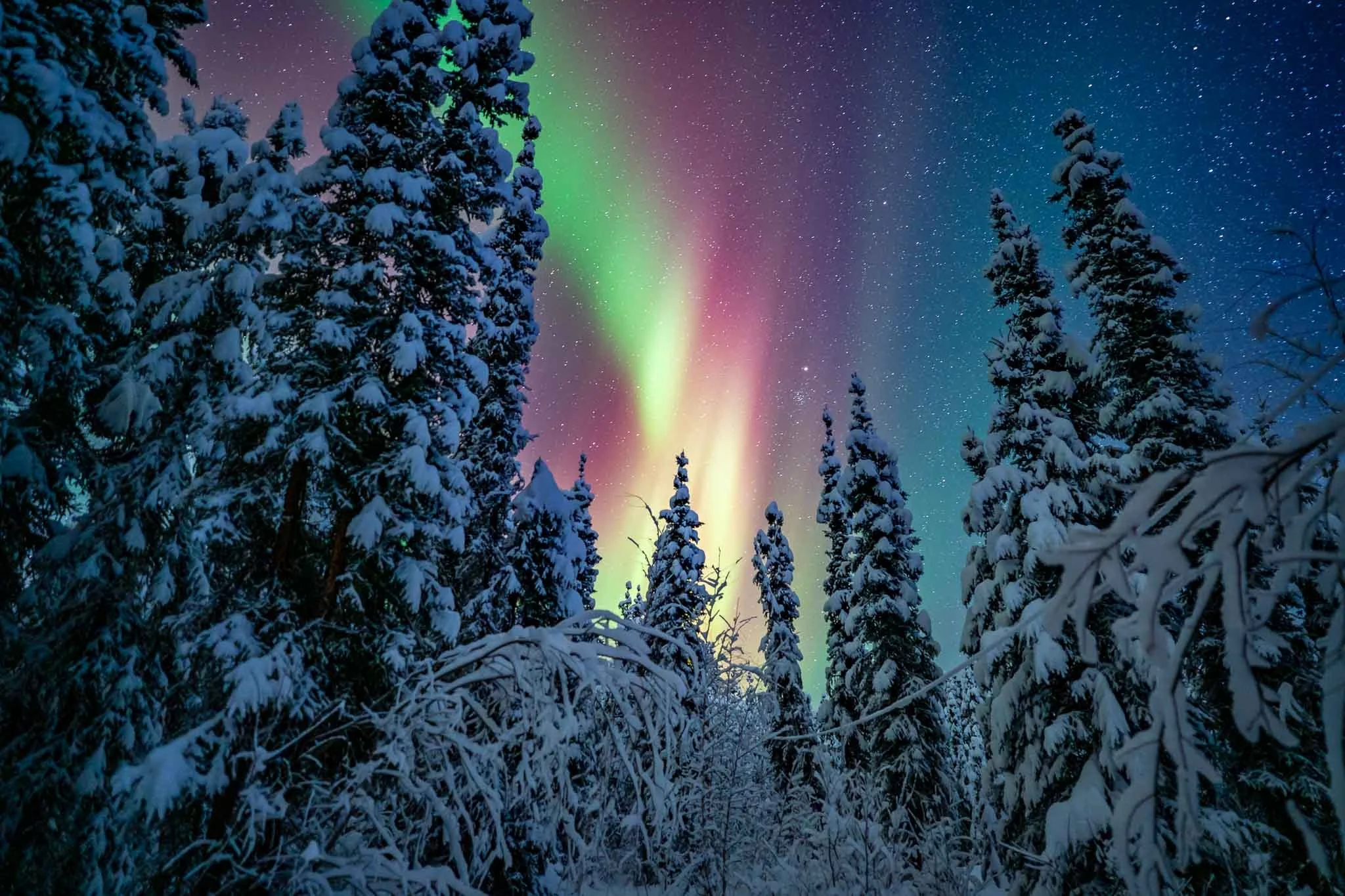Best Outdoorsy Things To Do in San Francisco: Hidden Gems & Favorites
When it comes to combining the outdoors with city life, San Francisco is a place like no other. If you’re an outdoorsy person, yet there are aspects of a city that you enjoy — like the diverse culture, food, and architecture — I firmly believe that there is no better city than San Francisco to visit or live in. I know that’s a strong claim, and certainly I have not been to all the cities in the world, but do you know that feeling when you just ate the best pizza of your life and don’t need the direct comparison to say it’s the best in the entire world? That’s how I feel about San Francisco.
But even if cities just don’t hit the spot for you, you’ll find plenty of places and activities in San Francisco that let you enjoy the outdoors instead of typical city life. Be it enjoying a beach and soaking in the salty breeze, a forested walk, wandering through coastal dunes, or marveling at the rugged cliffs dropping into the Pacific Ocean, there are so many options.
In this article, I will share with you my favorite outdoorsy things to do in San Francisco. Some may be well known, others may be hidden gems — so no matter if you’re a local or a visitor, I’m sure you’ll find something interesting for you!
Does that sound good to you? If so, grab a cozy drink, and let’s dive in!
Table of Contents
Just so you know: This post contains affiliate links, which means I may earn a small commission if you make a purchase through them — at no extra cost to you. I only recommend tours, gear, or services I truly believe in and think you’ll love too. Thank you so much for supporting my blog!
Batteries to Bluffs Trail
Marshall’s Beach, located near the northern end of the Batteries to Bluffs Trail, is only accessible during low tide — and it’s an incredible sunset spot.
Overall, this list is in no particular order — but if you only have time for one hike in San Francisco, make it this one. The Batteries to Bluffs Trail offers the best views of the city’s rugged Pacific coastline and the iconic Golden Gate Bridge.
Start at Baker Beach (and take some time to enjoy the views and the beach itself), then head north onto the trail and prepare to be mesmerized by the stunning scenery. Along the way, you’ll pass Marshall’s Beach, a fantastic photo spot with the rocky shoreline in the foreground and the bridge rising behind it — especially beautiful at sunset. Just be sure to check the tides: at high tide, access to the beach is cut off, though you can still enjoy the view from above.
While this isn’t a particularly long hike, it does involve a good number of stairs, so expect to get your heart and legs working.
For more tips, see the Lands End section below.
🗺 Location: Presidio – Start at Baker Beach
📌 Type: Coastal hiking trail
🎯 Things to Do: Hike with ocean views, beach access at Marshall’s Beach (low tide), photography, sunset watching
🌟 Highlights: Stunning views of Pacific coast & Golden Gate Bridge, rocky beach (sunset) photo ops
🧭 Route Info: ~0.7 mi one way, moderate hike with many stairs
🍽 Food & Drink: No food or drinks to buy on or super close to the trail; bring your own
📝 What to Know: Check tide charts before beach access; I recommend starting at Baker Beach, so the views of the Golden Gate Bridge are in front of you
Tidepooling at China Beach
Disclaimer: Tide pooling here is only possible during a very low tide — ideally during a negative tide. Otherwise, the intertidal area remains inaccessible.
I love tide pooling — it’s so much fun to explore what’s usually hidden beneath the ocean’s surface. From the terrace above China Beach (the dedicated parking lot is located there as well), head down to the beach and turn right when facing the ocean. You’ll see a group of large boulders — your gateway to the fascinating intertidal zone, where marine life thrives on the rocky shore. During very low tides, look for mussels, barnacles, sea anemones, and, if you’re lucky, even sea stars — all with incredible views of the Golden Gate Bridge in the background.
When tides are exceptionally low, you can even continue around the rocks toward Baker Beach, making it possible to connect your tide pooling adventure with a hike on the Batteries to Bluffs Trail (see earlier section).
In a Nutshell
🗺 Location: China Beach – Sea Cliff
📌 Type: Coastal exploration / intertidal zone
🎯 Things to Do: Explore tide pools during a negative tide, spot sea creatures, enjoy coastal views, walk toward Baker Beach if tides allow
🌟 Highlights: Observe marine critters like sea anemones, mussels, barnacles, sea stars (if lucky) in the rocky intertidal zone, views of the Golden Gate Bridge
🧭 Route Info: On China Beach head right to boulder area (accessible only during negative tide)
🍽 Food & Drink: No food options on site; bring water/snacks if staying a while
📝 What to Know: Only visit during a low, ideally negative, tide - best 1-2 hours before the tide reaches it's lowest point, so you don't need to worry about the ocean coming back; parking very limited, especially hard to find on weekends — consider public transit or rideshare; area connects to Baker Beach at negative tide
Lands End
Lands End, tucked into the northwestern corner of San Francisco, is a place where cultural history and rugged coastal beauty meet — and just like the name suggests, it offers a sense of stepping away from the city.
If you’re curious about San Francisco’s past, stop by the visitor center and educational signs to learn about the area’s heyday, when Sutro Baths stood here — a once-grand public bathhouse and entertainment complex. Today, all that remains are the concrete foundations, quietly crumbling beside the sea, offering a ghostly glimpse into that bygone era.
From there, the Lands End Trail winds along the cliffs, weaving through Monterey cypresses and eucalyptus trees with intermittent views of the Pacific Ocean, Golden Gate Bridge, and rocky coastline.
It’s a beautiful walk, but if you’re deciding between Lands End and the nearby Batteries to Bluffs Trail (which you can reach with a short walk from the end of Lands End), I personally prefer Batteries to Bluffs. The views of the coastline and the bridge are even more spectacular there — and I’ve found it to be generally less crowded. That said, both trails can be wonderfully peaceful during weekday mornings or off-season months.
A note on timing: These coastal trails are best enjoyed outside of summer. During June, July, and August, the fog is thick and persistent, often shrouding the views entirely. Your best chance for clear skies in summer is during a rare heatwave, when temps may rise into the high 70s or low 80s — unusually warm for San Francisco!
In a Nutshell
🗺 Location: Lands End / Sutro Baths
📌 Type: Coastal trail with historical ruins and ocean scenery
🎯 Things to Do: Walk the coastal trail, explore the Sutro Baths ruins, enjoy ocean and bridge views, learn local history at the visitor center, connect to other trails like Batteries to Bluffs
🌟 Highlights: Sutro Baths ruins, Golden Gate Bridge vistas, rugged coastal cliffs, access to hidden beaches like Mile Rock Beach
🧭 Route Info: ~3.4 mi (5.5 km) loop; moderate hike with some stairs and elevation (~554 ft / 169 m); connects to other trails in the Presidio like Batteries to Bluffs
🍽 Food & Drink: Water & other beverages at Lands End Lookout Visitor Center
📝 What to Know: Best visited on weekdays or in off-season months (fall through spring); summer months are typically extremely foggy, especially in the morning and later afternoons (i.e. no views) unless you're hitting a rare hot day; layers recommended (any season)
Golden Gate Park
Chain of Lakes
Let’s start with one of my favorite spots in the western part of Golden Gate Park: North, Middle, and South Lake.
Before major human intervention, this area was a stretch of coastal sand dunes dotted with 14 marshy lakes. Today, Golden Gate Park sits atop that transformed landscape. Of those original lakes, five remain—though some have been altered—including the three that make up the so-called Chain of Lakes.
What I love here is the genuine effort to restore the natural ecosystem—in particular, the recent rehabilitation of Middle Lake in 2024. Invasive plants have been removed, and native species planted to support local wildlife, including important pollinators. The trails around the lakes aren’t about serious hiking; they’re about slowing down and observing. It’s a peaceful spot, popular for birdwatching (both migratory and year-round), admiring native plants, reading on one of the many benches, or simply strolling along the lakes and a cascading stream.
In a Nutshell
🗺 Location: Golden Gate Park – Middle Lake
📌 Type: Nature trail / walking path around lakes and a small cascading stream in Golden Gate Park
🎯 Things to Do: Birdwatching, stroll past North, Middle & South Lakes, admire native plants, sit, read, or relax on benches
🌟 Highlights: Restored natural area with native plants, cascading stream, year-round and migratory birds
🧭 Route Info: Gentle walking trail; no major elevation changes
🍽 Food & Drink: None on-site — bring your own snacks or drinks
📝 What to Know: A peaceful spot for enjoying urban nature
Peacock Meadow & Conservatory of Flowers
The lawn in front of the Conservatory of Flowers is a perfect spot for a picnic.
Located on the eastern side of Golden Gate Park, Peacock Meadow and the adjacent Conservatory of Flowers make for a charming stop. It’s a great place to have a picnic, read, relax, or simply enjoy the scenery. On weekends, you’ll often find excellent food trucks at the meadow, so you don’t need to bring your own food — unless you want to. The meadow features colorful garden beds and a spacious lawn, where people can sit on the grass or on the bright yellow chairs provided by the park.
The Conservatory of Flowers is a striking Victorian-era greenhouse, showcasing a wide range of plant species, including both highland and lowland tropical plants. Though its exterior appearance closely resembles how it looked when it opened in 1879, the structure has endured its share of challenges. The most devastating event occurred in 1995, when a severe windstorm shattered 40% of the glass, causing significant structural damage and the loss of many rare plant specimens.
After being closed for eight years, a major restoration project culminated in 2003, rebuilding the conservatory’s historic architecture and reopening it to the public.
In a Nutshell
🗺 Location: Golden Gate Park – Conservatory of Flowers / Peacock Meadow
📌 Type: Garden & greenhouse / picnic & leisure spot
🎯 Things to Do: Picnic, read, relax on lawn; sit on grass, bring blanket or just use provided yellow chairs, stroll garden beds, explore the Conservatory’s tropical and aquatic plant collections
🌟 Highlights: Victorian glasshouse, exotic tropical plants, blooming seasonal gardens, relaxing open meadow
🍽 Food & Drink: Food trucks typically available on weekends; bring your own picnic any time
📝 What to Know: Conservatory requires ticket for entry (can be bought onsite); Free admission for SF residents, veterans and other eligible groups (proof needed)
🔗 More Info about the Conservatory of Flowers and current exhibitions
Botanical Garden
The San Francisco Botanical Garden is a great place to learn about the flora of different parts of the world — or simply to unwind in the midst of beautifully themed gardens. With over 8,000 plant species, the garden is organized into areas based on geographic region, ecozone, or specific plant groups, such as the magnolia or rhododendron collections. As you walk, you move through everything from cloud forests and Mediterranean landscapes to high-elevation tropics and native California habitats.
You’ll find benches tucked into quiet corners, birds darting between trees, and something blooming in nearly every season.
One of my favorite spots is the Ancient Plant Garden, which features species that have been around since the time of the dinosaurs. Giant tree ferns, horsetails, and other prehistoric plants grow here — it really feels like stepping into another era.
In a Nutshell
🗺 Location: Golden Gate Park – Botanical Garden
📌 Type: Botanical garden
🎯 Things to Do: Stroll through themed gardens, explore rare and exotic plants, relax on benches, take part in guided walks or seasonal events
🌟 Highlights: Over 8,000 plant species from around the world, including cloud forest collections, a redwood grove, and a blooming magnolia collection in winter
🍽 Food & Drink: No food sold inside; bring your own
📝 What to Know: Free admission for SF residents with ID, veterans, Museums For All participants, and Gardens members, plus on 'free days'.
🔗 More Info about the San Francisco Botanical Garden | Buy Tickets
Strawberry Hill
Once covered in wild strawberries, this charming hill got its name from the fruit that once grew along its slopes. Strawberry Hill sits on the eastern side of Golden Gate Park and is surrounded by Blue Heron Lake (formerly known as Stow Lake), making it technically an island — one you can access by two picturesque bridges.
It’s a peaceful spot for a scenic walk or even a boat ride across the lake. Blue Heron Boathouse, located on the north shore, rents pedal boats and rowboats, and also has a snack bar if you're in need of a treat.
If you hike to the summit, you’ll reach the highest point in Golden Gate Park, rising more than 400 feet. Along the way, you’ll encounter several surprises: the Chinese pagoda, the charming Stone (or Rustic) Bridge built in 1893, and the cascading Huntington Falls. On a clear day, you might even catch glimpses of the Golden Gate Bridge or the city skyline peeking through the trees.
In a Nutshell
🗺 Location: Golden Gate Park – Strawberry Hill
📌 Type: Island hill with trails & lake
🎯 Things to Do: Walk or boat around Blue Heron Lake, climb to the hill’s summit, explore pagoda, waterfall, bridges, viewpoints
🌟 Highlights: Highest point in Golden Gate Park (400+ ft), Chinese pagoda, Huntington Falls, Stone (Rustic) Bridge (1893), Golden Gate Bridge glimpses through trees
🧭 Route Info: ~2.3 mi loop, easy, with some gentle stairs and incline.
🍽 Food & Drink: Blue Heron Boathouse on north shore rents pedal and row boats (seasonal), offers snack bar
📝 What to Know: Boat rentals depend on season and weather; restrooms available at the boathouse
California Academy of Sciences
Okay, technically this one isn’t outdoors — it’s a museum — but if you love nature, there’s a good chance you’ll love natural history & science museums (for the lack of a better term — the CAOS is actually much more than a museum!) too. And this one is a really good museum!
The CAOS features the incredible Steinhart Aquarium that showcases and informs about marine life in California and around the world— including colorful anemones, fish, corals, octopuses, jellyfish, and even penguins. In addition to the underwater world, the CAOS also features the Kimball Natural History Museum with excellent exhibitions on natural history and life on Earth. I also love the modern exhibits that explore the natural history and present condition of California’s wild spaces, showcasing local urban ecology and ecosystems from the coast to the deserts.
One standout highlight is the four-story rainforest dome, where you spiral your way up through the layers of a tropical rainforest — from the forest floor to the canopy. Along the way, you’ll see colorful butterflies, tropical birds, and fascinating insects in a lush, living environment. It’s like stepping into a real jungle.
Another unique experience is the Earthquake Simulator (word of warning: it may not be operational at the time you visit; last time I visited in August 2025 it was temporarily closed), which lets you feel what it was like during the two major quakes that shook the Bay Area: the infamous 1906 earthquake and the 1989 Loma Prieta earthquake. You step into a recreated Victorian home and experience the jolts and shakes just as they happened — it’s both fun and a bit humbling.
Don’t miss the living roof either — a rolling green rooftop planted with native species that provides insulation, manages rainwater, and attracts local wildlife.
If you’re into space and stargazing, head to the planetarium for an immersive trip through the cosmos (if you want to make sure you can see a specific show, reserve your spot in advance — popular shows & times may sell out).
And if you’re in town on a Thursday, check out NightLife, a 21+ evening event where the museum opens after hours with music, drinks, and rotating science-themed activities. Think science meets nightlife.
In a Nutshell
🗺 Location: Golden Gate Park – California Academy of Sciences
📌 Type: Natural history & science museum with a planetarium, aquarium, rainforest dome & living roof
🎯 Things to Do: Explore exhibits, walk through the rainforest dome, visit the aquarium & planetarium, stroll the living roof
🌟 Highlights: Earthquake Simulator (1906 & 1989 quakes), Osher Rainforest with 1,600+ live plants and animals, interactive exhibits, Thursday NightLife events
🍽 Food & Drink: Museum café; bar available during Thursday NightLife (21+ only)
📝 What to Know: NightLife events take place Thursdays (21+ only); Osher Rainforest closes at 7:45 pm (last entry at 7:30 pm); planetarium tickets must be reserved separately; advance ticket purchase recommended
🔗 More Info about the California Academy of Sciences and events
Book Your Ticket
Salesforce Park
In the heart of downtown San Francisco, high above the city streets, you’ll find one of the city’s most unique green spaces: Salesforce Park. Nestled among towering skyscrapers, this rooftop park truly feels like an urban oasis — and it’s one of my personal favorites.
A looping walking path circles the park, lined with educational signs that share interesting facts about San Francisco’s microclimates, the city’s famous fog, native plants, and the local ecosystem. It’s both relaxing and informative — perfect for a midday escape or a casual stroll.
There’s also a bar tucked into the park that serves wine, beer, and other beverages. But you can also bring your own food — there are plenty of benches, lawns, and tables and chairs where you can sit back and enjoy a picnic.
What makes Salesforce Park even more special is its rotating calendar of free activities. From birdwatching walks and garden tours to yoga classes, writing workshops, and live music, there’s always something happening. Just be sure to check the current schedule to see what’s on during your visit.
In a Nutshell
🗺 Location: Downtown – Salesforce Transit Center Rooftop
📌 Type: Urban rooftop park
🎯 Things to Do: Walk the rooftop pathway, birdwatching, garden tours, yoga, writing workshops, live music
🌟 Highlights: Themed gardens above city bustle amidst skyscrapers, educational signs on plants, microclimates & ecosystem, rooftop bar
🧭 Route Info: 0.5-mile loop pathway around the rooftop park
🍽 Food & Drink: Bar with drinks; BYO food allowed
📝 What to Know: Check the current event schedule for a variety of free activities (see link below)
Presidio
The Presidio is a former military base turned national park site on the northern edge of San Francisco. It’s full of trails, forested areas, coastal overlooks, museums, and new gathering spaces. Here are my favorite areas that I love exploring:
Crissy Field
Crissy Field is a beloved local gem for enjoying the outdoors since it was transformed from a military airfield into a National Park Site starting in 2001 — a place where San Franciscans come to run, bike, walk their dogs (keep an eye out for coyotes if your pup is off-leash!), birdwatch, unwind on the beach, enjoy time with family, and take in the kind of views that make you pause.
One of my favorite features is the restored salt marsh, which offers vital habitat for both migratory and resident birds.
Crissy Field is also one of the best places in San Francisco to catch a beach sunset. Picture the sun dipping behind the Golden Gate Bridge on a clear evening — especially beautiful in early spring, fall, or winter, when fog is less likely to steal the show.
Out on the bay, you’ll often spot wingfoilers carving across the water, sailboats gliding by, and even the occasional sea lion popping up to say hello.
In a Nutshell
🗺 Location: Crissy Field – East Beach
📌 Type: Coastal walk with restored tidal marsh and scenic views
🎯 Things to Do: Stroll along the flat waterfront trail, observe native plants and birds in the marsh, learn from environmental signage, and enjoy views of the Golden Gate Bridge and Alcatraz
🌟 Highlights: Restored tidal wetland habitat supporting birds, fish, and native vegetation; iconic views of the bay and Golden Gate Bridge; a great sunset spot (on clear, non-foggy days)
🧭 Route Info: Flat, paved trail (~1.5 miles one way from East Beach to the Warming Hut); ideal for walking, running, and biking
🍽 Food & Drink: Picnic tables available; snacks and beverages at the Warming Hut
📝 What to Know: Often windy and chilly in the afternoon, especially in summer — best visited in the morning or on a calm day
Inspiration Point & Ecology Trail
While you won’t see the Golden Gate Bridge from here, Inspiration Point is one of the Presidio’s most scenic overlooks, offering panoramic views of Angel Island, Alcatraz, the San Francisco Bay, and historic buildings that once housed military personnel.
My favorite time to visit is spring, especially around April and May, when the surrounding trails burst into color with blooming native wildflowers. Look for carpets of blossoms in the rocky outcrops — the diversity of native plant life here is truly something to marvel at. Just a short walk from the viewpoint, you’ll also find a small redwood grove, where you can stand among California’s iconic giants without even leaving the city.
What makes this area so special is the ongoing ecological restoration that has brought back several native species to the Presidio. For example, restoration efforts have included the reintroduction of the Variable Checkerspot butterfly (Euphydryas chalcedona), which was locally extinct since the late 1970s. Since relocations began in 2017, populations have thrived thanks to restored native scrub, including key host plants like sticky monkey-flower and California bee plant.
In a Nutshell
🗺 Location: Inspiration Point – Presidio Blvd near Arguello Gate
📌 Type: Scenic overlook connected to hiking trails
🎯 Things to Do: Stop for a panoramic view, photograph the scene, hike the ecology trail including a small redwood grove, enjoy carpets of native wildflowers along the trail in spring
🌟 Highlights: Sweeping views over the Presidio forest canopy, Alcatraz, Angel Island, San Francisco Bay, and historic Presidio buildings; wildflowers in spring & native butterflies like variable checkerspots, thanks to ongoing habitat restoration
🧭 Route Info: Start on the Ecology Trail (2.7 mi out-and-back, easy); connects Inspiration Point with the Presidio Transit Center and passes through a redwood grove and restored habitats
🍽 Food & Drink: No food on-site
📝 What to Know: Best visited in spring for wildflowers
🔗 More Info about Inspiration Point | Ecology Trail on AllTrails
Tunnel Tops
One of San Francisco’s newest green spaces, the Presidio Tunnel Tops, has quickly become a local favorite — and it’s easy to see why.
Built above the Presidio Parkway tunnels, this expansive park offers breathtaking views of the Golden Gate Bridge, beautifully designed gardens featuring a mix of native plants and popular horticultural selections, and wide open lawns perfect for picnicking. The paths weave through these diverse landscaped areas, making it an ideal spot for a casual stroll.
Plus, you’ll find a variety food trucks on the Main Parade Lawn (the visitor center is located here too)— perfect for grabbing a casual meal or snack.
In a Nutshell
🗺 Location: Presidio Tunnel Tops – Above the Presidio Parkway tunnels
📌 Type: One of SF's newest parks with views, play areas, gardens, and trails
🎯 Things to Do: Enjoy Golden Gate Bridge views, wander native & horticultural plant gardens, visit the nature play space, stroll the Presidio Promenade, explore nearby wildflower patches
🌟 Highlights: Iconic views, large picnic areas, native plant landscapes vibrant in spring blooms
🧭 Route Info: Easy stroll; trails connect seamlessly to Crissy Field and forested paths
🍽 Food & Drink: Food trucks onsite; picnic lawns
📝 What to Know: Popular on weekends—much quieter during the week
Lobos Creek Valley Trail
Silverbush lupine, coyote brush, and other native dune plants form dense, colorful carpets across the restored coastal habitat at Lobos Creek Valley.
Lobos Creek Valley is a beautifully restored dune ecosystem and easily one of my favorite spots in the Presidio. If I had to imagine what coastal California looked like before human impact, this would be the place that comes to mind.
The peaceful, approximately 0.8-mile (1.3 km) boardwalk winds through a vibrant and diverse landscape, bursting with native plants and wildlife. Walking here feels like stepping back in time to a pristine coastal dune habitat — free from invasive species like ice plant, which have transformed much of California’s coastline.
At both ends of the trail, you’ll find trail guides that help you learn more about Lobos Creek Valley’s unique ecosystem and the importance of coastal dunes — just remember to return the guide to the box at the opposite trailhead when you're done.
After your walk, it’s easy to connect to other nearby trails in the Presidio, head down to Baker Beach to relax, or continue exploring via the Batteries to Bluffs Trail, China Beach, or Lands End.
In a Nutshell
🗺 Location: Lobos Creek Valley – Western edge of the Presidio
📌 Type: Coastal dune ecosystem and boardwalk trail
🎯 Things to Do: Walk through restored dune habitat, admire native wildflowers, watch for butterflies, and connect to the coastal trail system
🌟 Highlights: Restored dune landscape, colorful spring blooms, and the return of Silvery Blue butterflies after reintroduction
🧭 Route Info: ~0.8 mi (1.3 km) boardwalk; connects easily to the coast (Baker Beach & Batteries to Bluffs Trail) and nearby forest paths
🍽 Food & Drink: None on-site
📝 What to Know: Best in spring for wildflowers and butterflies.
Angel Island
Angel Island sits in the middle of San Francisco Bay and offers a peaceful retreat from the city’s hustle and bustle. You can explore historic sites, hike up Mount Livermore for sweeping views, picnic by the water, or rent a bike to circle the island’s perimeter.
Often called the “Ellis Island of the West,” Angel Island served as the main immigration station on the West Coast from 1910 to 1940. But unlike Ellis Island, which primarily processed European immigrants relatively quickly, Angel Island processed a large number of Asian immigrants — many of whom endured long detention periods under exclusionary policies like the Chinese Exclusion Act. This history of prolonged detention and harsh interrogation makes Angel Island a complex site, reflecting a very different — and often more difficult — immigrant experience. Today, the former immigration station is preserved as a museum, where visitors can walk through restored buildings and learn about the struggles and resilience of those who passed through.
Beyond its history, Angel Island is a paradise for outdoor lovers. Miles of hiking and biking trails wind through diverse landscapes — from grassy hills and oak woodlands to rocky shorelines with panoramic bay views. The summit of Mount Livermore offers some of the most incredible vistas of the bay, including the Golden Gate Bridge, the San Francisco skyline, and the Marin Headlands.
One thing still on my bucket list is camping on Angel Island. There are campsites with incredible views of the Golden Gate or downtown San Francisco. I imagine it must be a surreal experience to stay after the last ferry leaves — to soak in the silence and the views, knowing how many people are just across the bay, yet how far away the city feels from the island.
In a Nutshell
🗺 Location: Angel Island State Park – SF Bay
📌 Type: Island in San Francisco Bay with history & trails for hiking & biking
🎯 Things to Do: Hike or bike the 5.5‑mile Perimeter Loop, climb Mt. Livermore, visit the Immigration Station, picnic by the water
🌟 Highlights: 360° Bay views, historic Immigration Station, military ruins, beaches, seasonal wildflowers, wildlife including deer, and overnight camping with reservations
🧭 Route Info: Perimeter Loop (~6 mi • ~488 ft elevation • moderate) – scenic, multi-use trail around the island; North Ridge & Sunset Trail Loop (~5.1 mi • ~780 ft elevation • moderate) – hike to Mt. Livermore for panoramic views
🍽 Food & Drink: Limited; small café near ferry landing — best to bring your own food and water
📝 What to Know: Must be accessed by ferry; overnight camping reservations fill fast — booking early highly recommended
🔗 Links: Ferry Schedule • Angel Island Perimeter Loop Trail • North Ridge & Sunset Trail Loop • Angel Island Camping Info & Reservations
Glen Canyon Park
Tucked away in San Francisco’s southern neighborhoods, Glen Canyon Park offers a rugged nature escape right within the city. Unlike smaller neighborhood parks with just a patch of lawn and a few benches, this 70-acre canyon has plenty of space for real hiking, with winding trails, rocky outcrops, and a creek running through a surprisingly wild landscape.
In spring, the canyon bursts to life with wildflowers like California poppies, adding bright splashes of color to hillsides and meadows. You’ll find shaded paths beneath eucalyptus and willow trees, open grassy stretches, and steep slopes that make it feel far removed from the city — even if the sound of nearby traffic occasionally drifts in on the higher sections, carried by the canyon’s topography and acoustics.
This is very much a locals' spot — peaceful, low-key, and often overlooked by tourists, partly because it’s not near major attractions or dramatic viewpoints like other places (though you can walk from here to Twin Peaks for one of the best city views — see info box below). But that’s exactly what makes it special: a place to slow down, explore a quieter side of San Francisco, and reconnect with nature.
In a Nutshell
🗺 Location: Glen Canyon Park
📌 Type: Canyon-based hiking
🎯 Things to Do: Walk the canyon loop, follow Creeks-to‑Peaks to Twin Peaks, explore rock formations & creekside vegetation
🌟 Highlights: peaceful Islais Creek, seasonal wildflower blooms, urban wildlife
🧭 Route Info: ~1.8 mi canyon loop (308 ft gain • moderate), longer 4‑mi Creeks‑to‑Peaks option (~757 ft gain) to Twin Peaks (great views of San Francisco)
🍽 Food & Drink: Nearby cafés in the Glen Park neighborhood
📝 What to Know: Best in spring for wildflowers
🔗 AllTrails Glen Canyon Park Trail • AllTrails Creeks-to-Peaks Trail
Aquatic Cove & Black Point Historic Gardens
Tucked between Fisherman’s Wharf and Fort Mason, Aquatic Cove is a calm, sheltered inlet close to the popular Ghirardelli Square. With the historic ships of Hyde Street Pier to one side and sweeping views of Alcatraz, the Golden Gate Bridge, and the Marin Headlands, it’s a fantastic place to pause and soak in the scenery. It’s not a remote nature escape, but Aquatic Cove delivers a classic San Francisco experience — with salty air, stunning views, and a peaceful vibe.
Despite being close to major tourist attractions, Aquatic Cove often feels surprisingly local — especially in the early mornings, when swimmers from local swim clubs slip into the chilly waters of the bay.
Thanks to the cove’s protected shape and lack of strong currents, it’s also one of the best spots for swimming in the bay, even for casual swimmers. The water is typically calm, and its quality is tested regularly. That said, the bay is cold year-round with the warmest temperatures in October, when it may reach the low 60s°F (around 16°C). Bring a wetsuit if you’re not used to swimming in those conditions.
You may share the water with sea lions or harbor seals, though they usually keep their distance. (Still, I have to admit — seeing a sea lion head pop up nearby and then disappear beneath the surface is definitely an unsettling moment in my experience 😄)
After your swim, make your way up the stairs to the Black Point Historic Gardens, a newly restored park that sits above Aquatic Cove and the bay. The gardens feature mostly native and some popular horticultural plantings and are a haven for birdwatchers, with lots of local and migratory birds year-round. From this vantage point, you’ll enjoy beautiful views looking down over Aquatic Cove and the bay beyond.
The gardens are especially stunning in spring, around April and May, when native wildflowers are in full bloom. If you’re interested in getting involved, volunteer opportunities are available (see link in info box) to help care for and maintain this beautiful green space.
In a Nutshell
🗺 Location: Aquatic Park
📌 Type: Protected cove for bay swimming & historic garden
🎯 Things to Do: Swim in the calm waters, walk the promenade, enjoy views of historic ships, and explore the restored Black Point Gardens above the cove
🌟 Highlights: Probably the best protected swimming spot in San Francisco Bay, scenic backdrop of Alcatraz & cable car turnarounds; tiered Black Point Gardens with native plantings and history
🧭 Route Info: Flat access along Aquatic Park; steps to reach garden above
🍽 Food & Drink: Nearby cafés and snacks at Ghirardelli Square or Beach Street
📝 What to Know: Water is chilly year-round (wetsuits recommended); no lifeguards
🔗 More info about Aquatic Park • Volunteering at Black Point Historic Gardens
Crosstown Trail
The Crosstown Trail is a developing multi-use trail that runs southeast to northwest across San Francisco, linking neighborhoods and green spaces over about 17 miles.
What makes the Crosstown Trail so special is how it runs through roughly the entire vertical length of the city, basically connecting some of the city’s hidden parks, staircases, community gardens, and scenic spots — from the southern stretches of Candlestick Point, to McLaren and Glen Canyon Park, up through neighborhoods like the Sunset through Golden Gate Park, and to the Pacific Ocean.
The trail offers a unique way to experience the city’s urban nature and vibrant communities, with sections featuring community gardens, hidden paths, and public art.
If you don’t want to rush through, I recommend doing the trail in sections on different days. There are so many individual, small stretches of a variety of communal gardens, art, and views to discover, you’ll definitely want to stop regularly to take it all in, making this hike a longer adventure. I personally would say the trail is especially interesting for locals because it leads you through neighborhoods that some may never have stepped foot in if they don’t live there, and it also showcases many of San Francisco’s incredible hidden spots.
I’d also say it’s a great way for visitors to learn more about San Francisco’s hidden gems while also visiting popular spots (like Golden Gate Park or Lands End) along the way. The “classic” spots are concentrated in the second half of the hike. So — if you only want to do part of it — as a local or a visitor who has been to SF already, I’d recommend focusing on the first half; as a first-time visitor, focus on the second half.
In a Nutshell
🗺 Location: San Francisco Crosstown Trail – Start at Candlestick Point
📌 Type: Multi‑neighborhood urban hiking trail
🎯 Things to Do: Hike across SF South to North: pass through neighborhoods like Excelsior, Glen Canyon, and the Sunset
🌟 Highlights: Diverse urban scenery with focus on hidden staircases, gardens, parks, and public art through a variety of neighborhoods across SF
🧭 Route Info: ~17 mi end‑to‑end one-way; can be done in shorter segments
🍽 Food & Drink: Not many options in the first section (when starting from Candlestick Point) until you reach the Glen Canyon neighborhood
📝 What to Know: Some elevation gain, so the hike will make you sweat in some stretches - not too bad in terms of hills considering that it is San Francisco; full day hike
Wow — that list turned out even longer than I expected! Hopefully, you found something in there that sounds fun or worth checking out.
Scroll down for a few general tips that might be helpful before heading out!
Know Before You Go
Access & Fees
- Most parks & spots are free: San Francisco city parks like Glen Canyon, Presidio Tunnel Tops, Strawberry Hill, Aquatic Cove, and the Crosstown Trail do not charge entrance fees.
- Fee waivers for SF residents, veterans, and other eligible groups: Some places that charge fees (such as the Botanical Garden or the Conservatory of Flowers) may offer free or discounted access. Be sure to check the official websites for the latest rules and eligibility.
- Parking: Parking is limited and can be challenging on weekends and holidays, and in busy neighborhoods at any time. Public transit, biking (keep the hills in mind, though), or walking is recommended when possible.
Best Time to Visit
- Spring (March–May): Wildflowers bloom and the weather is mild — my favorite time for gardens and trails.
- Summer (June–August): Expect fog and wind especially near the coast. Temperatures are typically in the 60s (Fahrenheit). Dress in layers (as you should always in SF).
- Fall (September–November): Often sunny and clear - the best time of year; in fact September & October are the warmest months in San Francisco.
- Winter (December–February): Cooler and wetter - temperatures are still mild though & no fog; a great time for exploring the coast on a sunny day. Some trails can be muddy. Check conditions before heading out.
More on Weather, Safety & Leave No Trace
- A note on San Francisco microclimates & weather: Typically calm morning and windy afternoons. Always bring layers. Different parts of the city have different microclimates: it is typically warmer and sunnier in neighborhoods further from the ocean that are sheltered by hills, while it is more windy, foggy, and cooler near the coast.
- Wildlife: Observe animals like sea lions, harbor seals, and local birds from a distance. Do not feed or disturb them.
- Respect trail rules: Keep dogs on leash where required, pack out trash, and stay on designated paths to protect habitats.
- Swimming: The bay is chilly year-round; wear a wetsuit if you are not used to cold water. The water quality is tested regularly. Aquatic Cove is a great place to swim in the bay, most other places aren't (especially not the open ocean) due to rip currents, cold water and strong waves.
Where to Stay
San Francisco is a city of neighborhoods, each with its own vibe and charm. This is just a small selection to help you choose a home base:
- Marina District: Scenic views of the Golden Gate Bridge and the Bay. Close to the waterfront.
- North Beach: The city’s Italian district, charming and full of character — classic SF vibes.
- Mission District: The city’s historic Mexican neighborhood, full of culture, great food, and murals.
- Castro: San Francisco’s iconic LGBTQ+ neighborhood with a rich history.
- Hayes Valley: Trendy with stylish boutiques and cafés.
- Union Square: The shopping and hotel hub—not very “neighborhoody,” but central and well-connected.
Check available accommodations here:
Looking For More Great Things To Do In San Francisco?
Check out the experiences below to find unique tours and activities! If you find something you like and book through these links, I may earn a small commission — at no extra cost to you. It's a great way to support this blog while planning your adventure.
Read On: More Adventures You Might Be Interested In
Follow the Adventure
Latest on the Blog
Search
📌 Pin for later
If you enjoy my content, please consider supporting my work
Your support helps me to pour my time and soul into Venture Beyond The Picture while keeping it clutter free. Every little bit means a lot to me — monetarily, but also as an appreciation of my work. I am grateful for every contribution.


